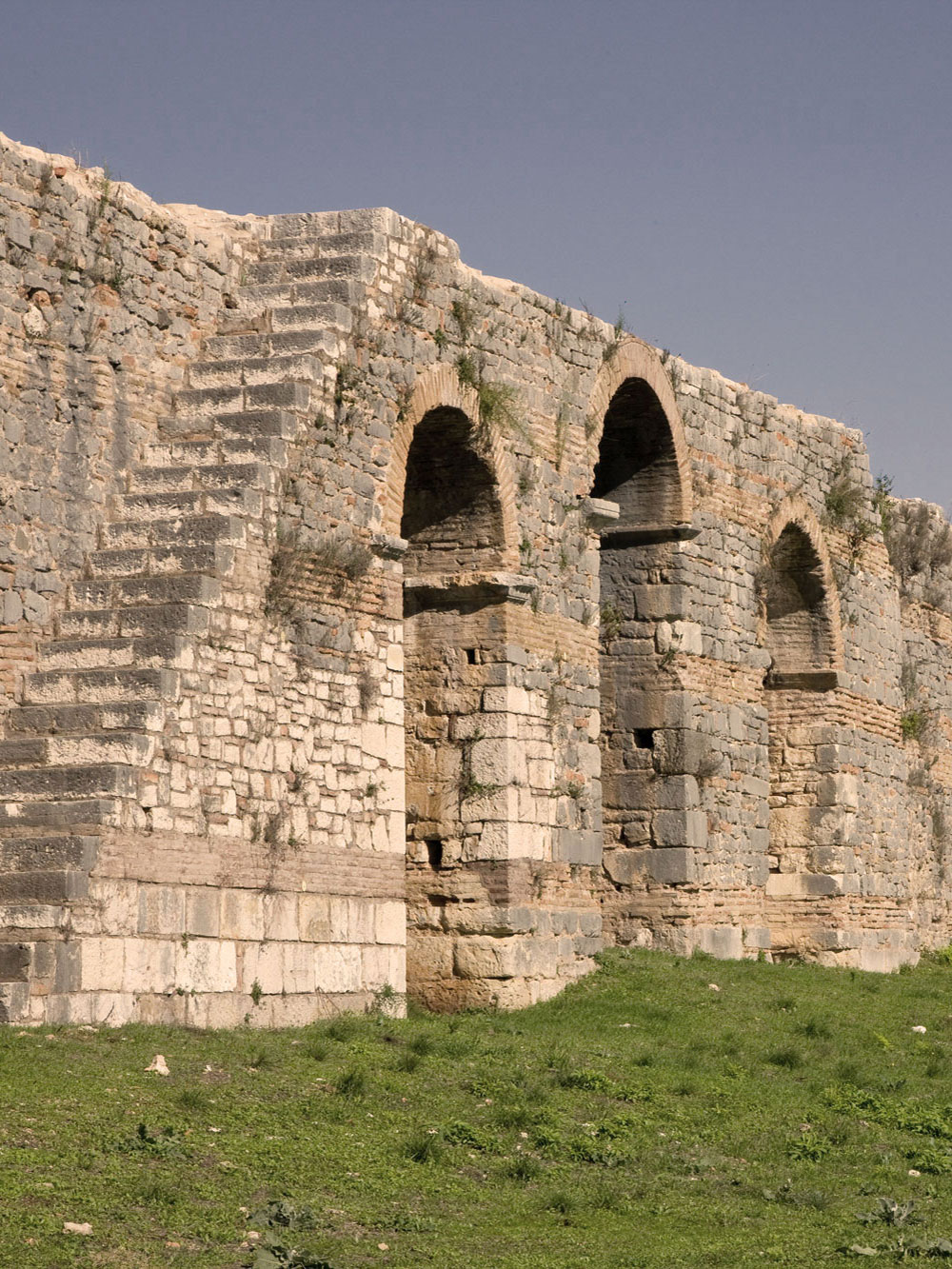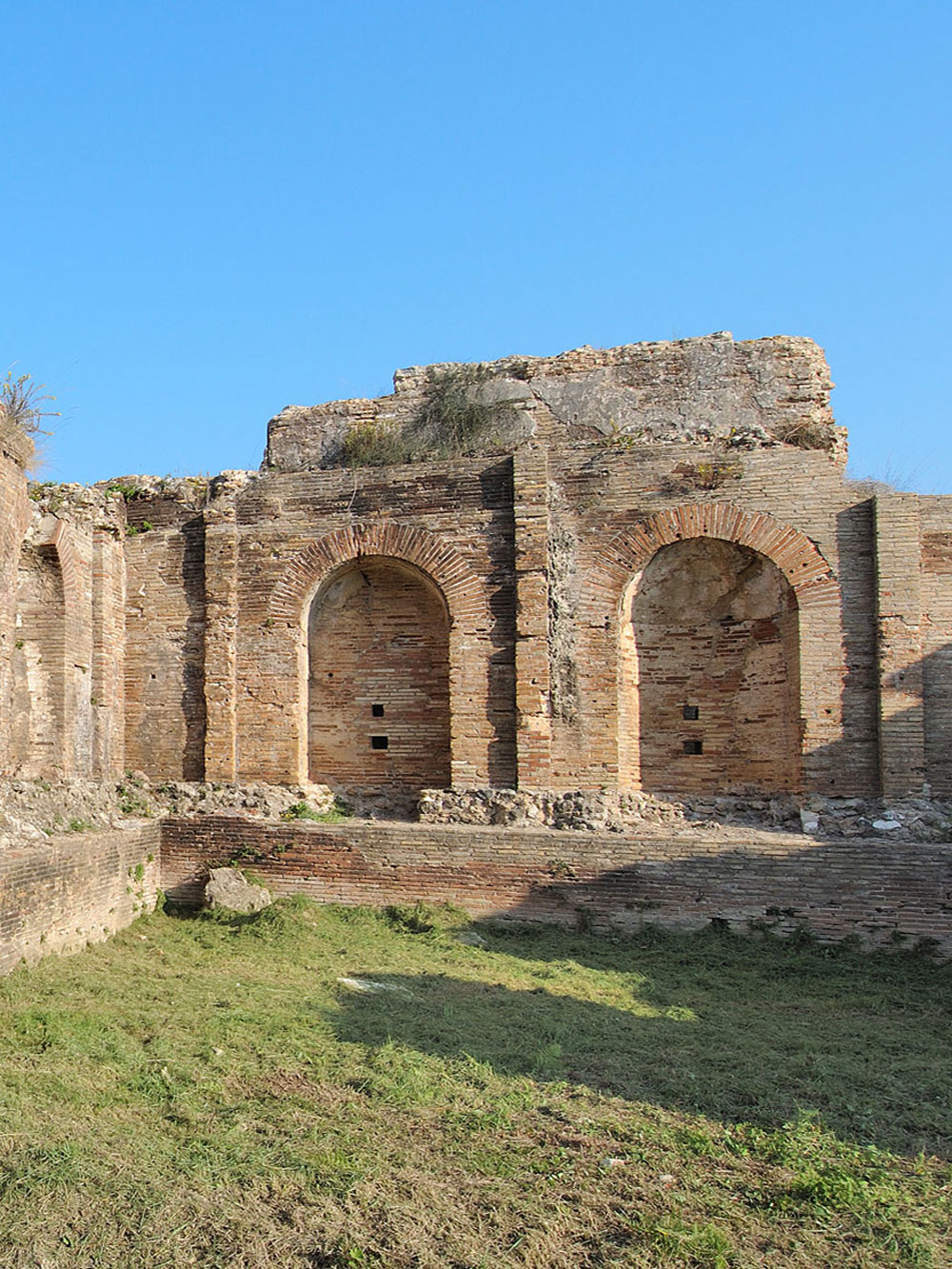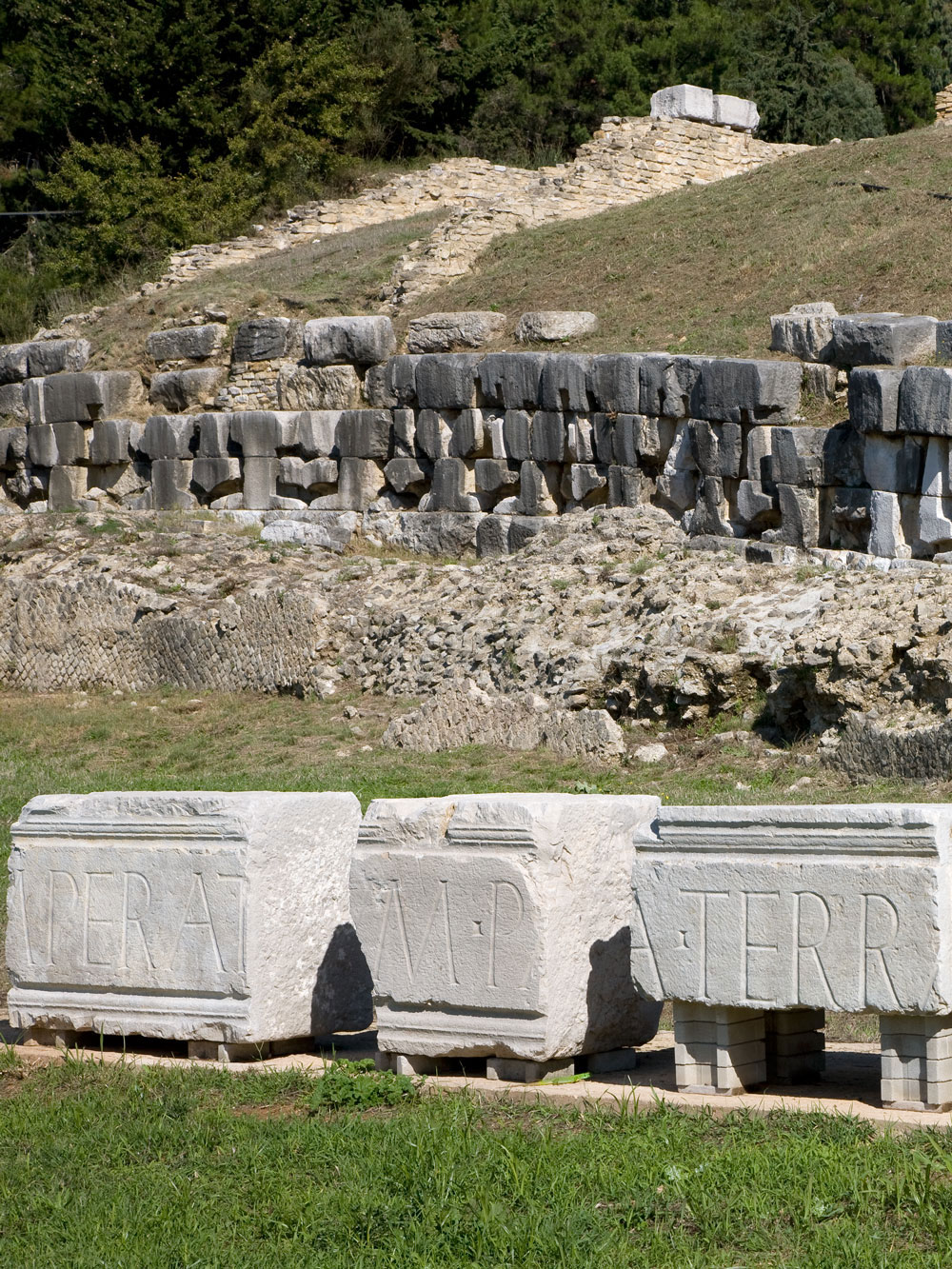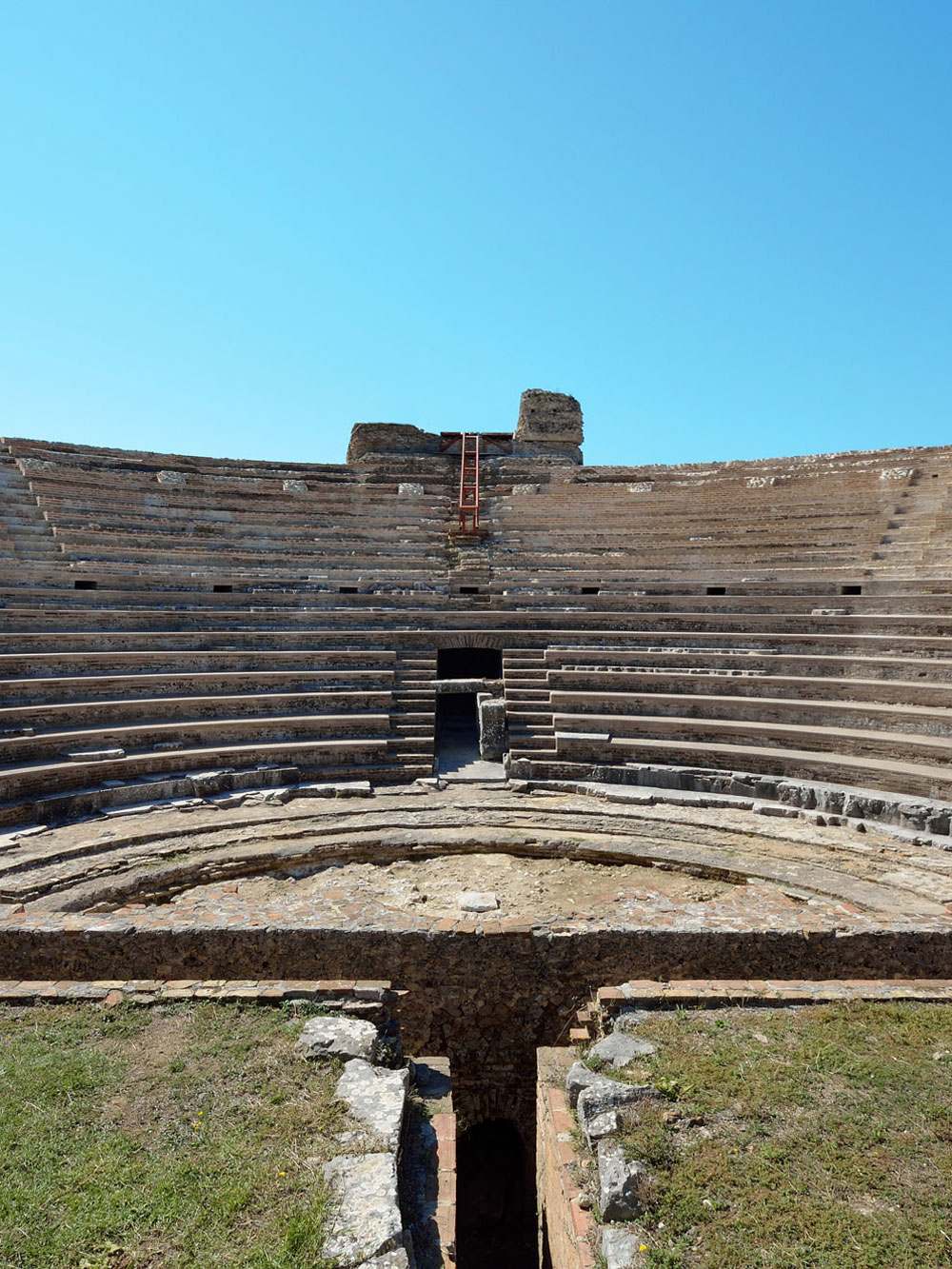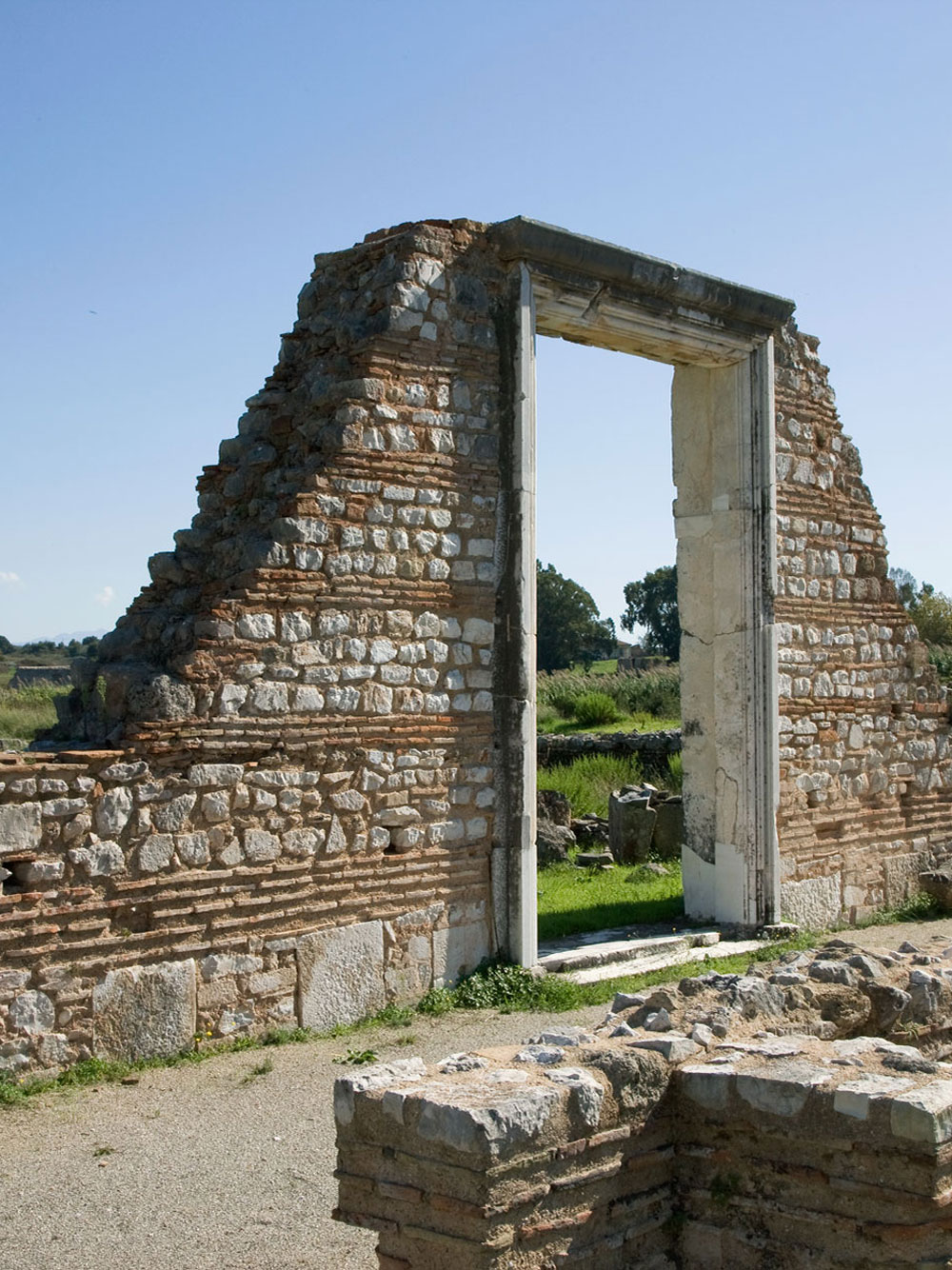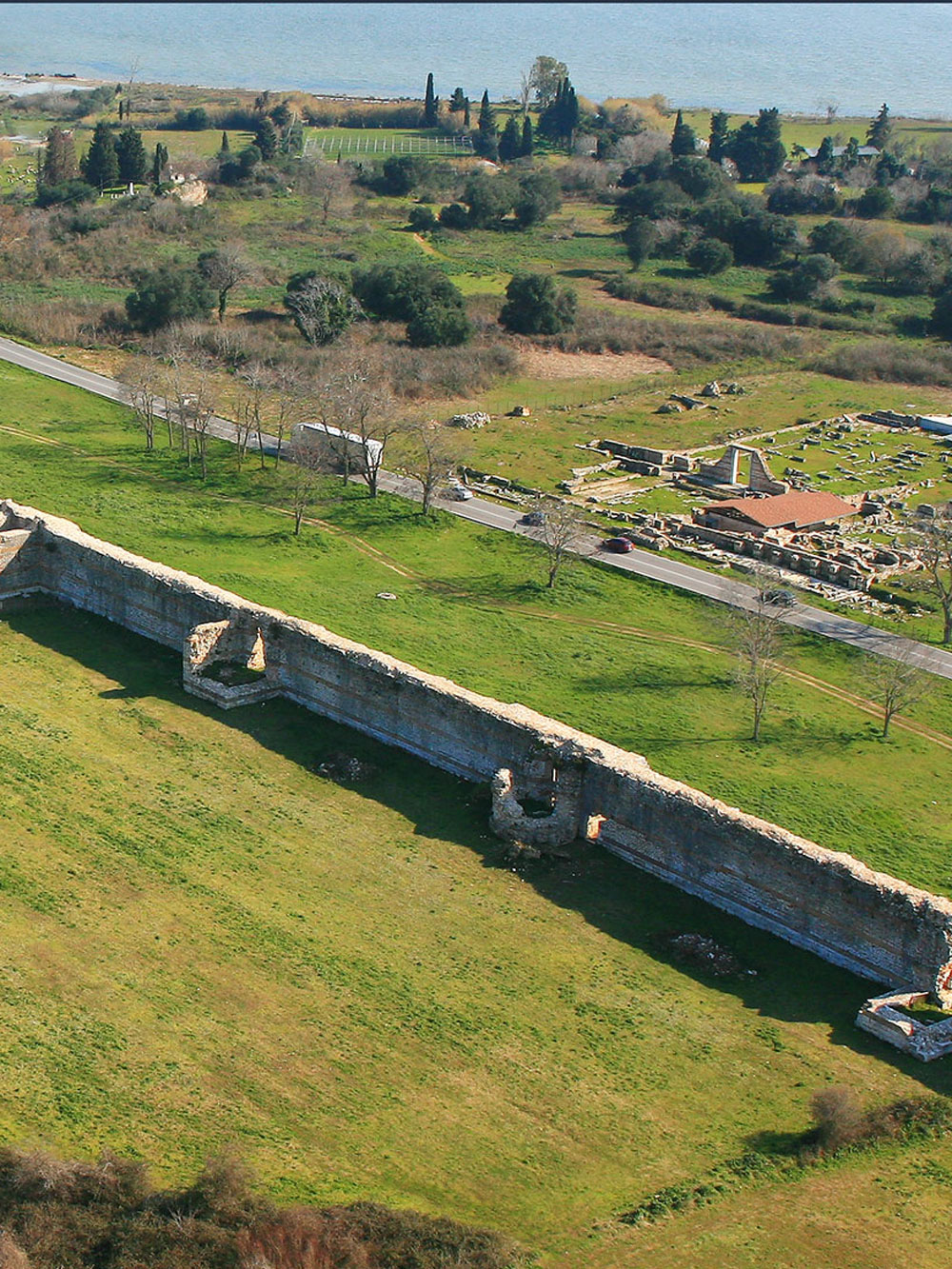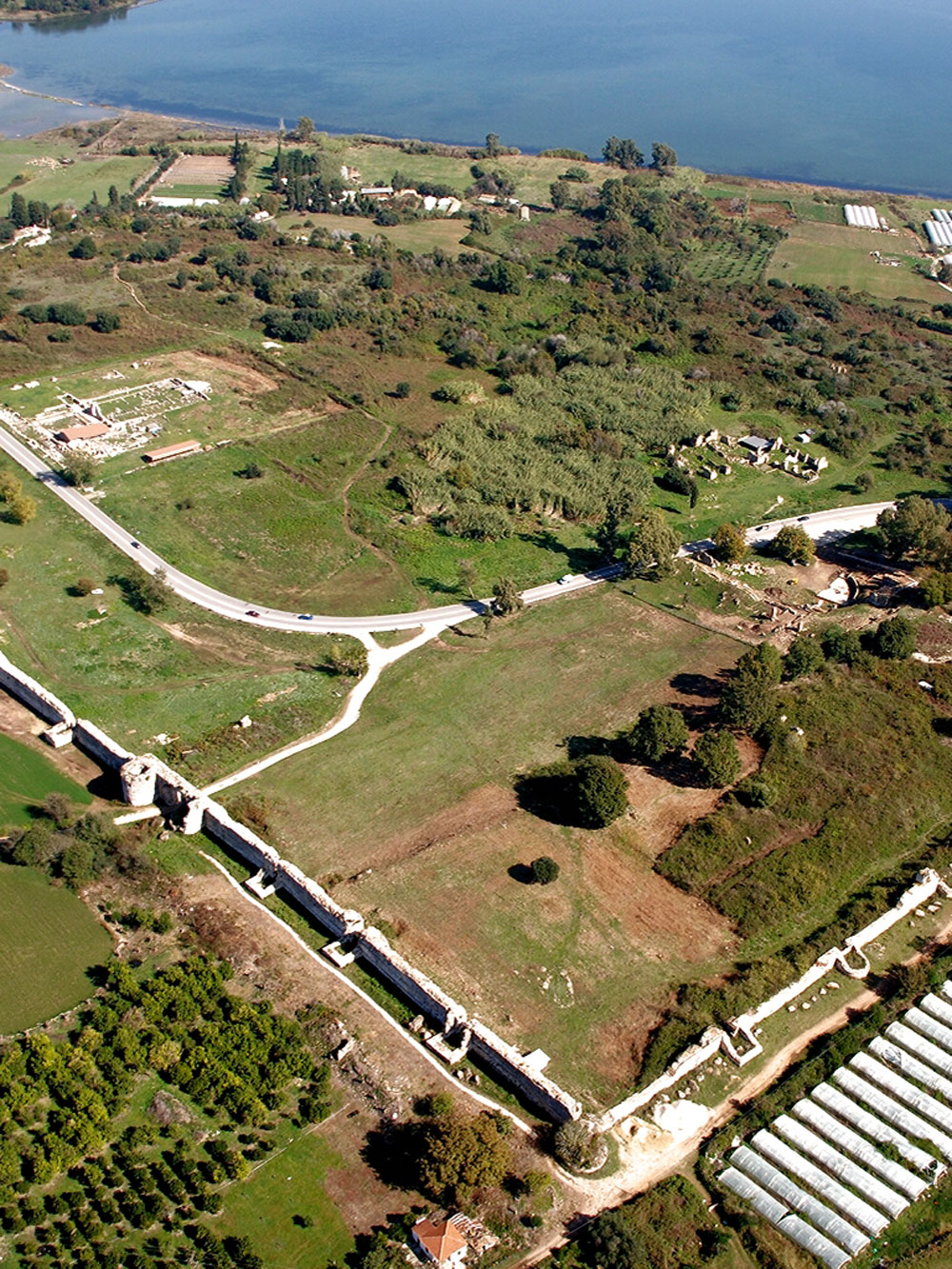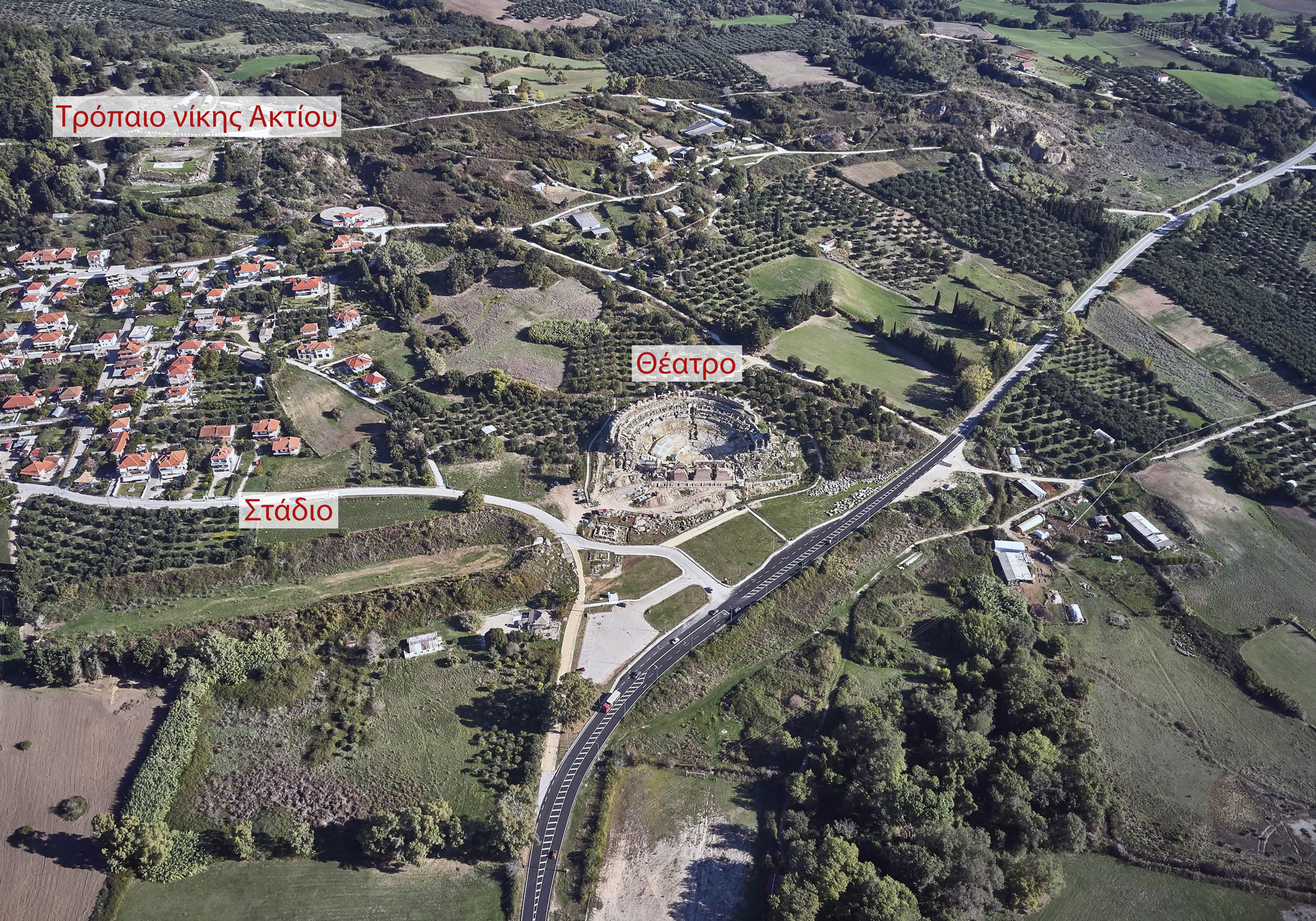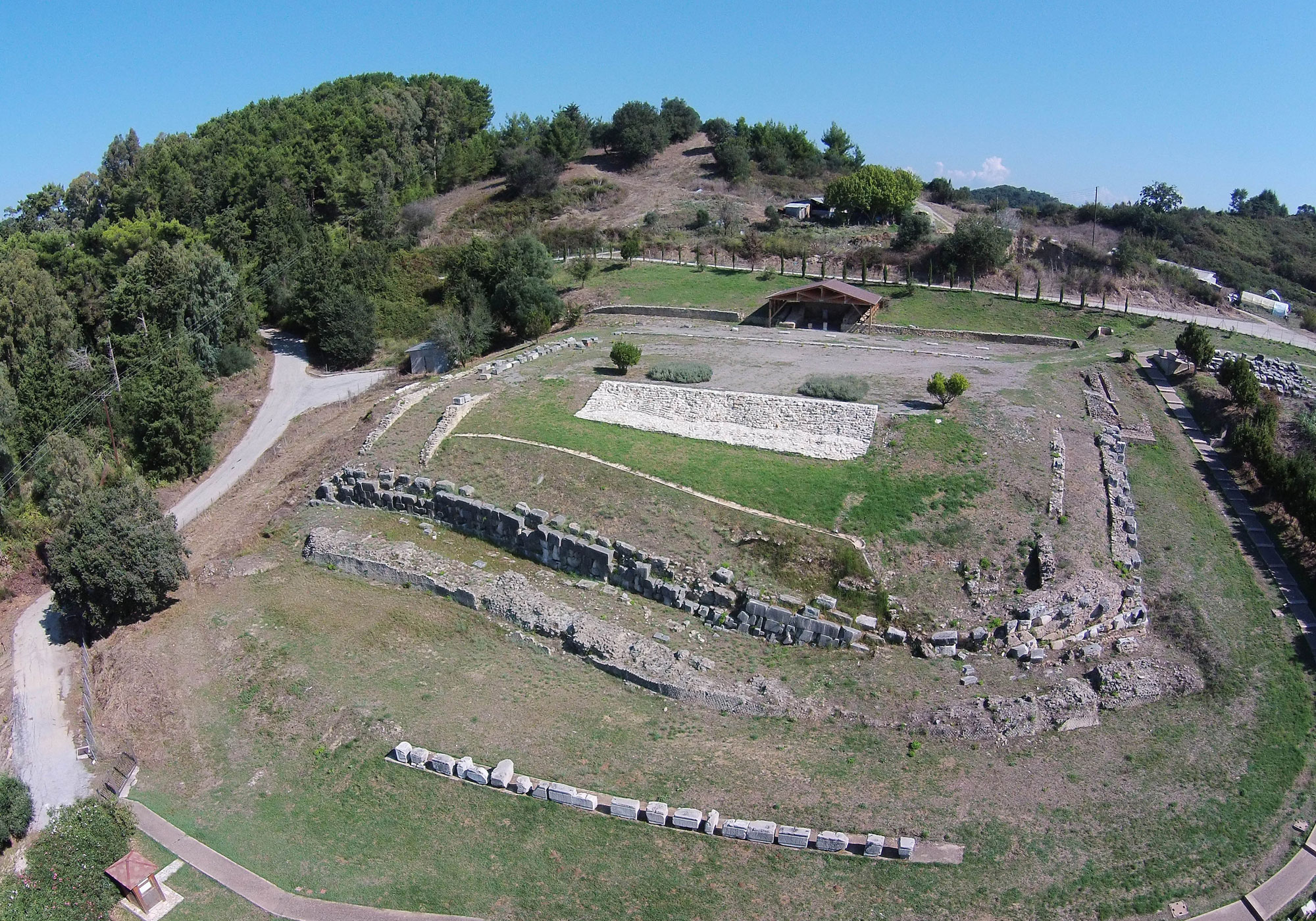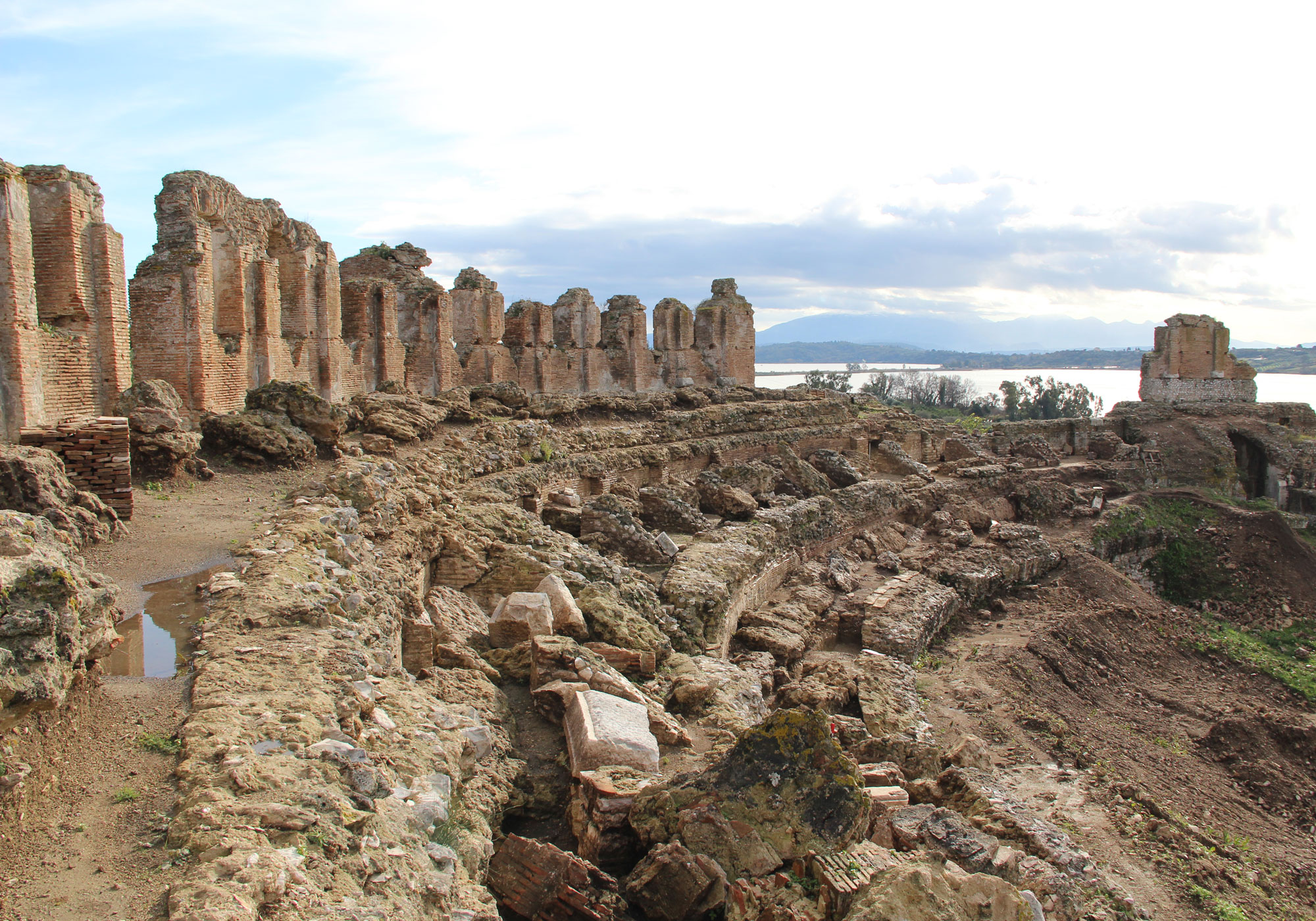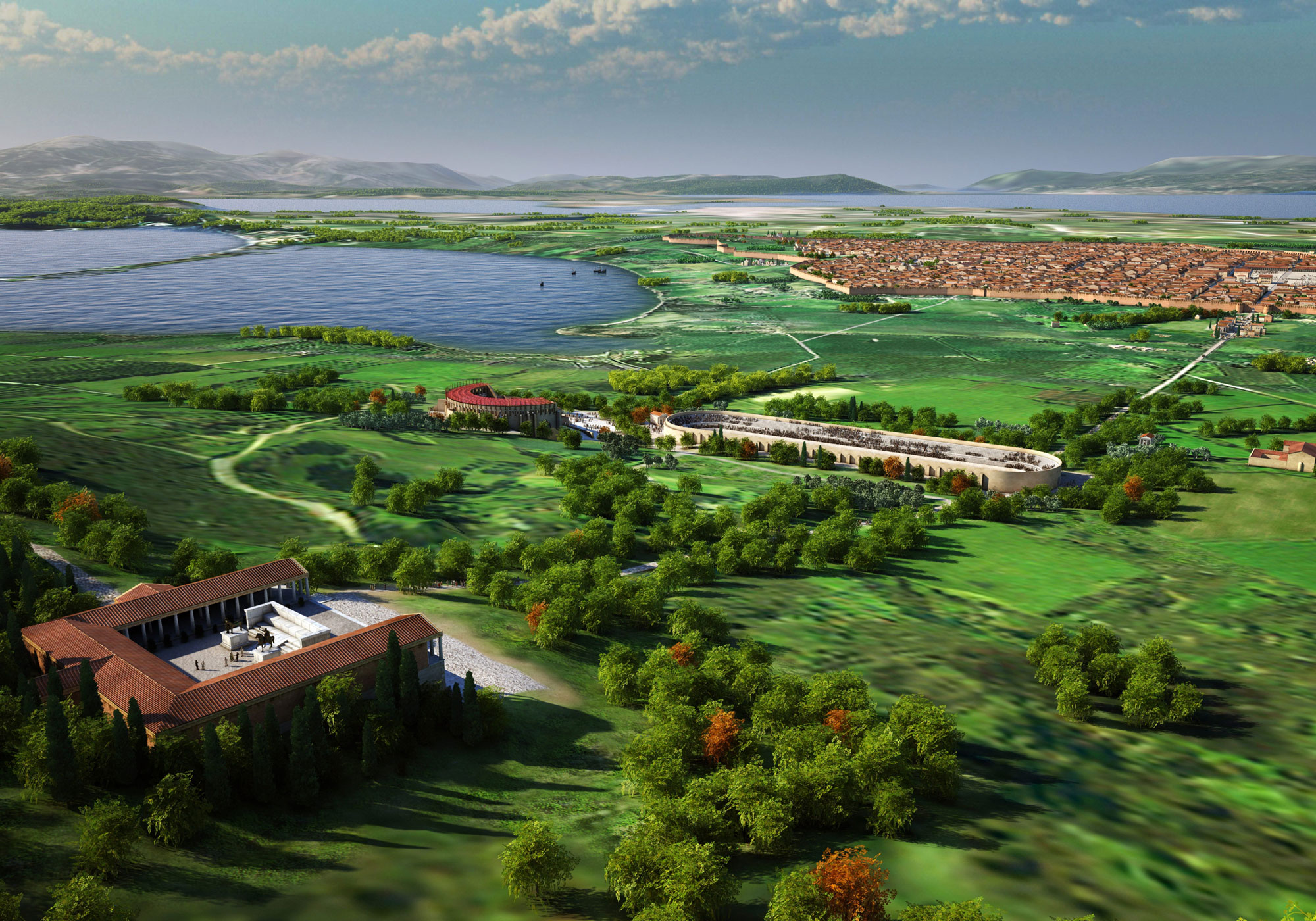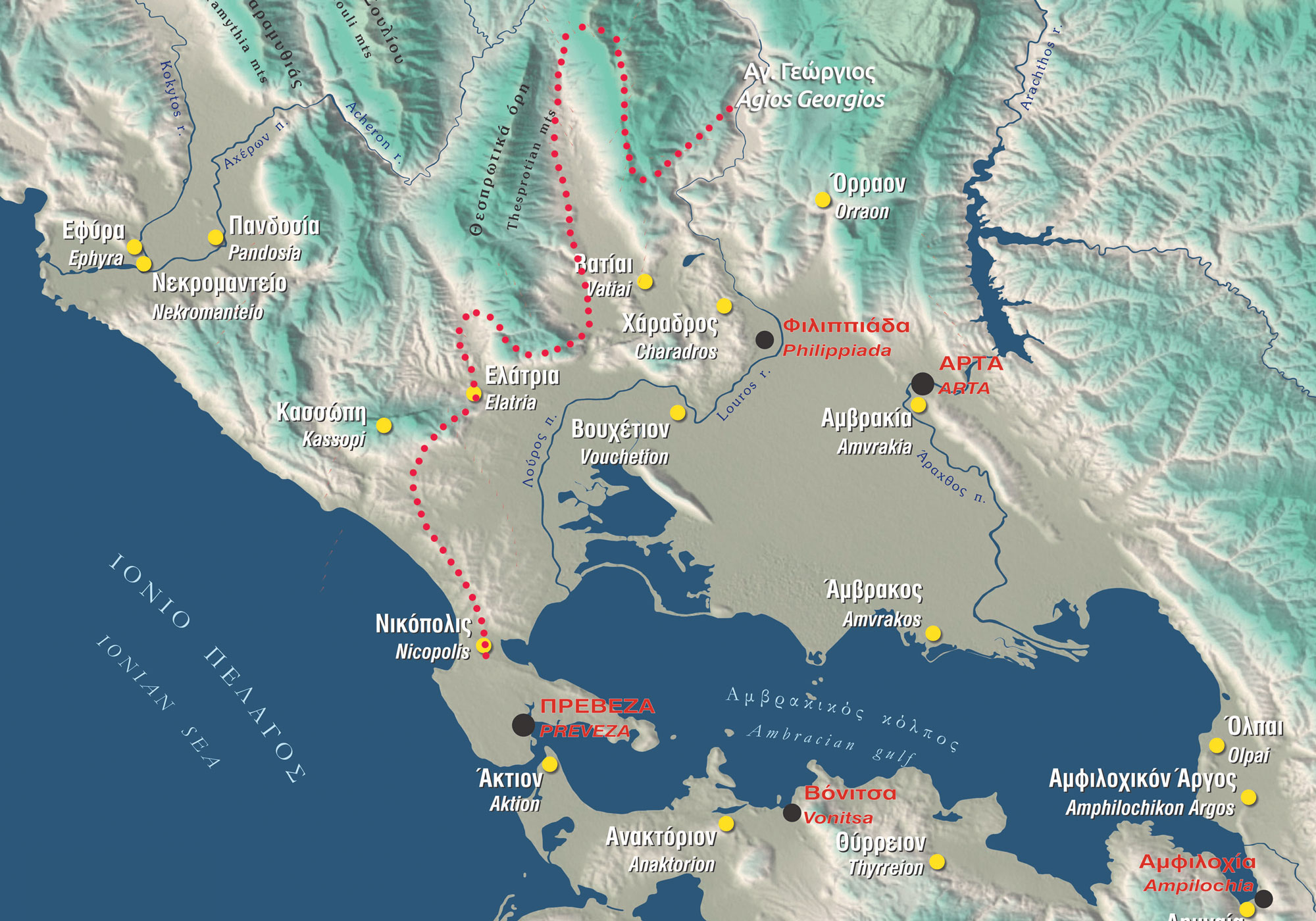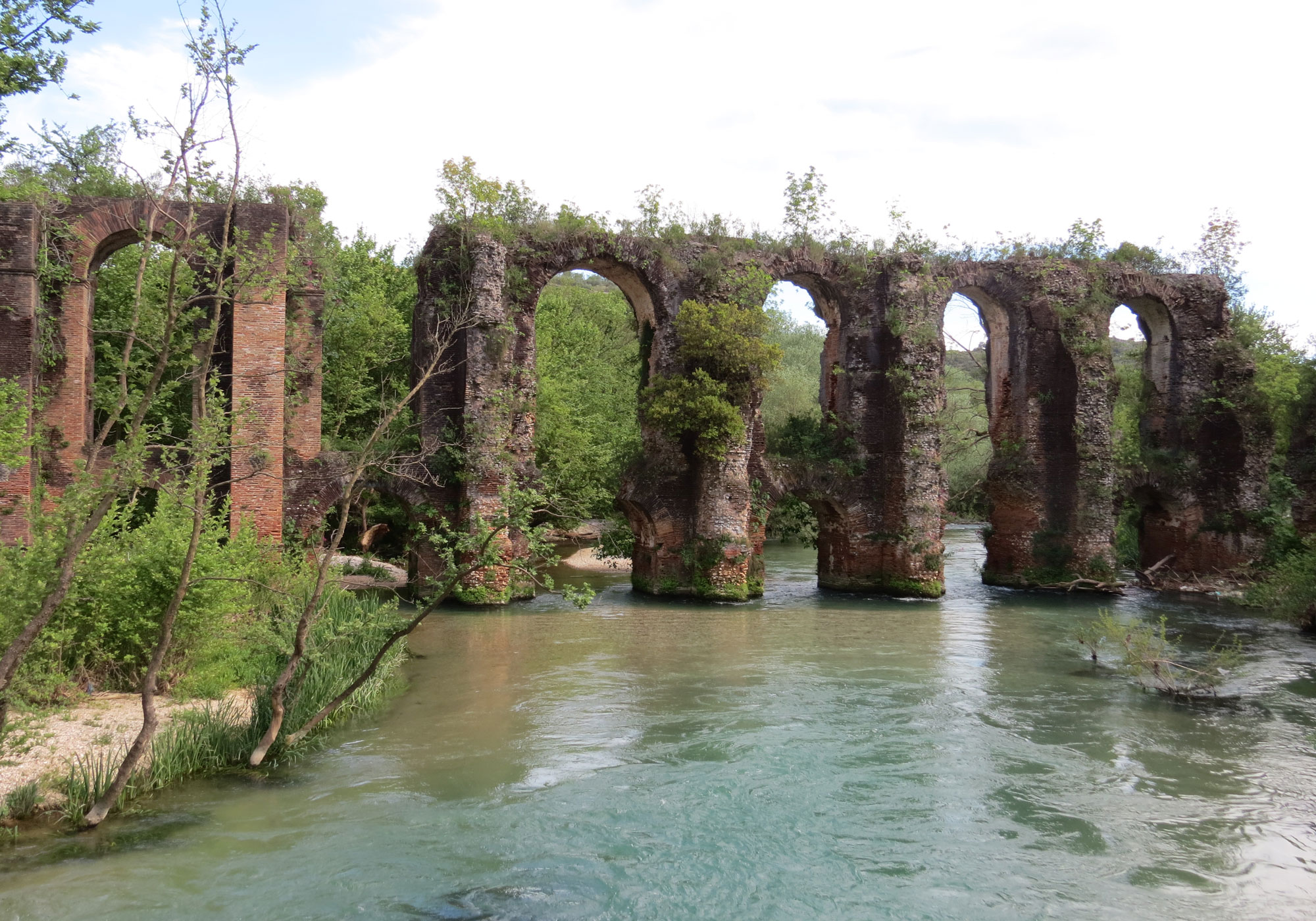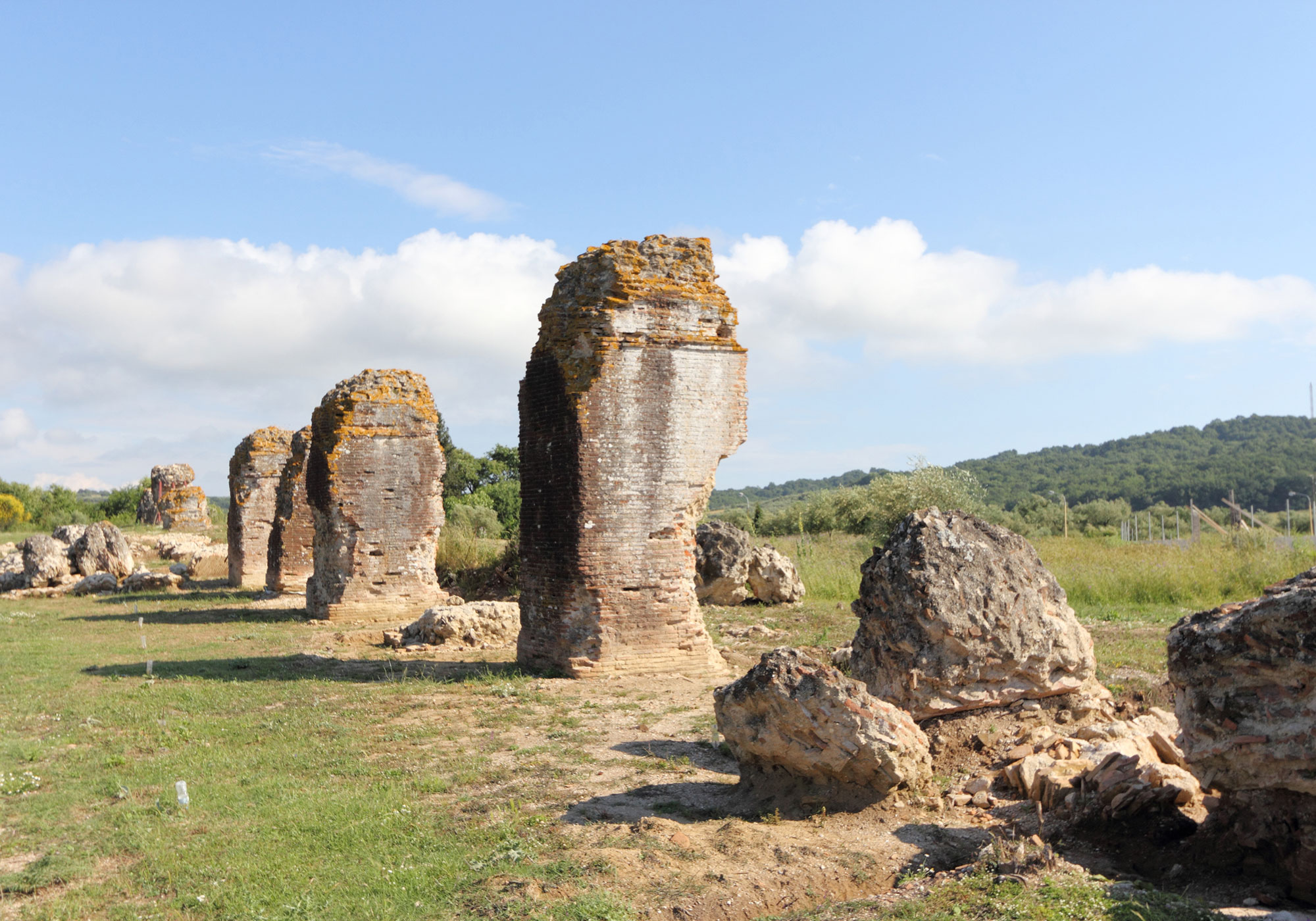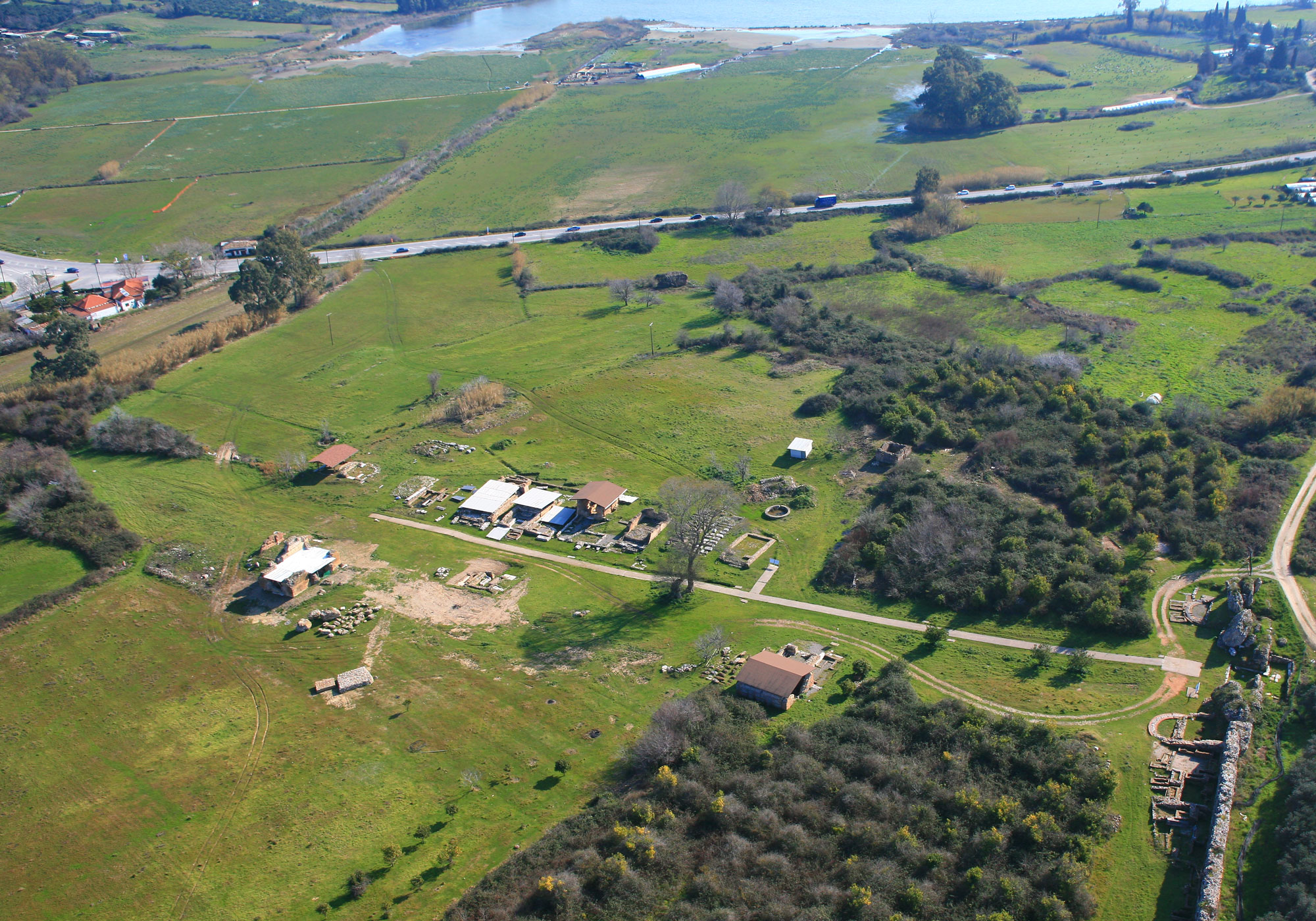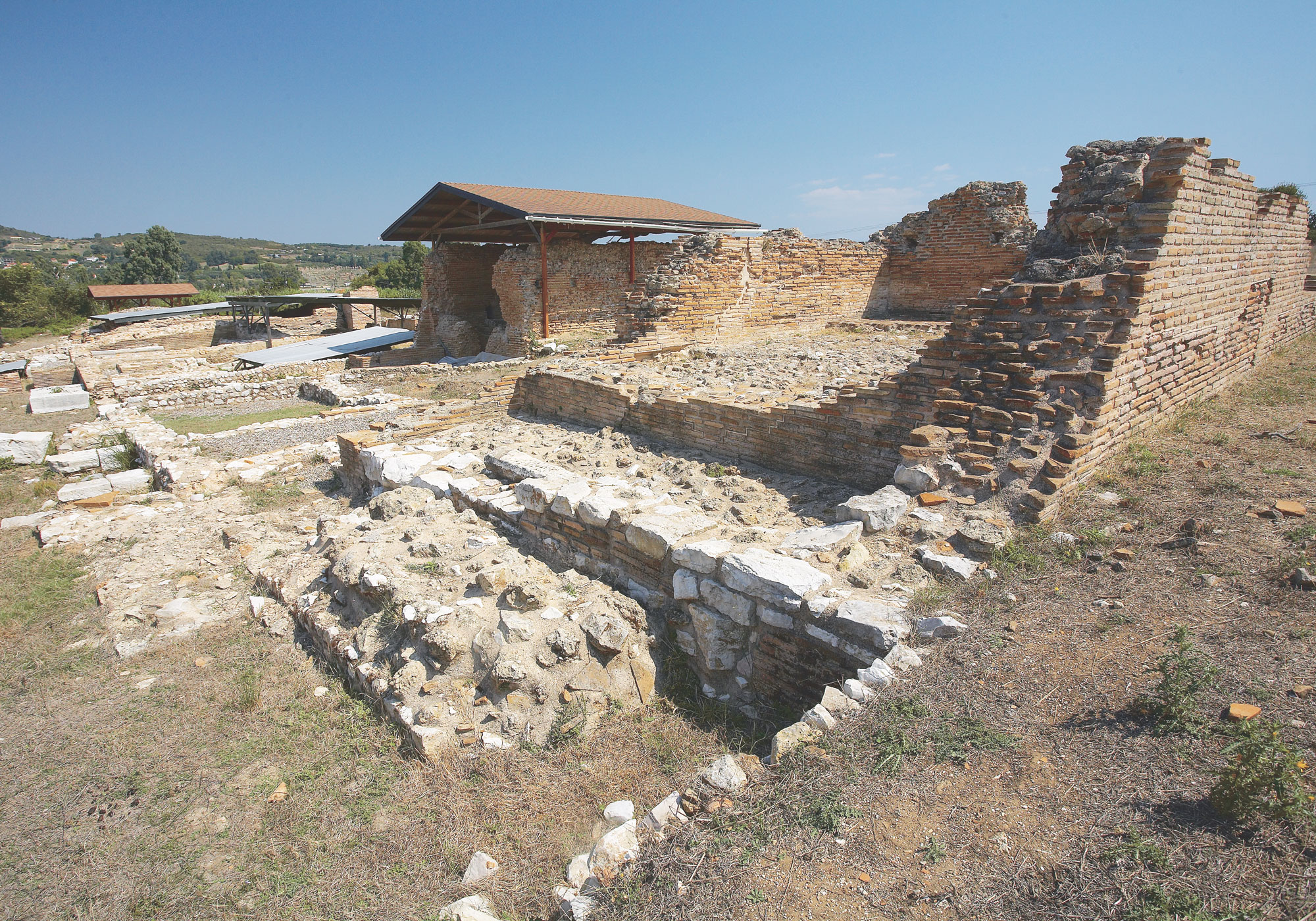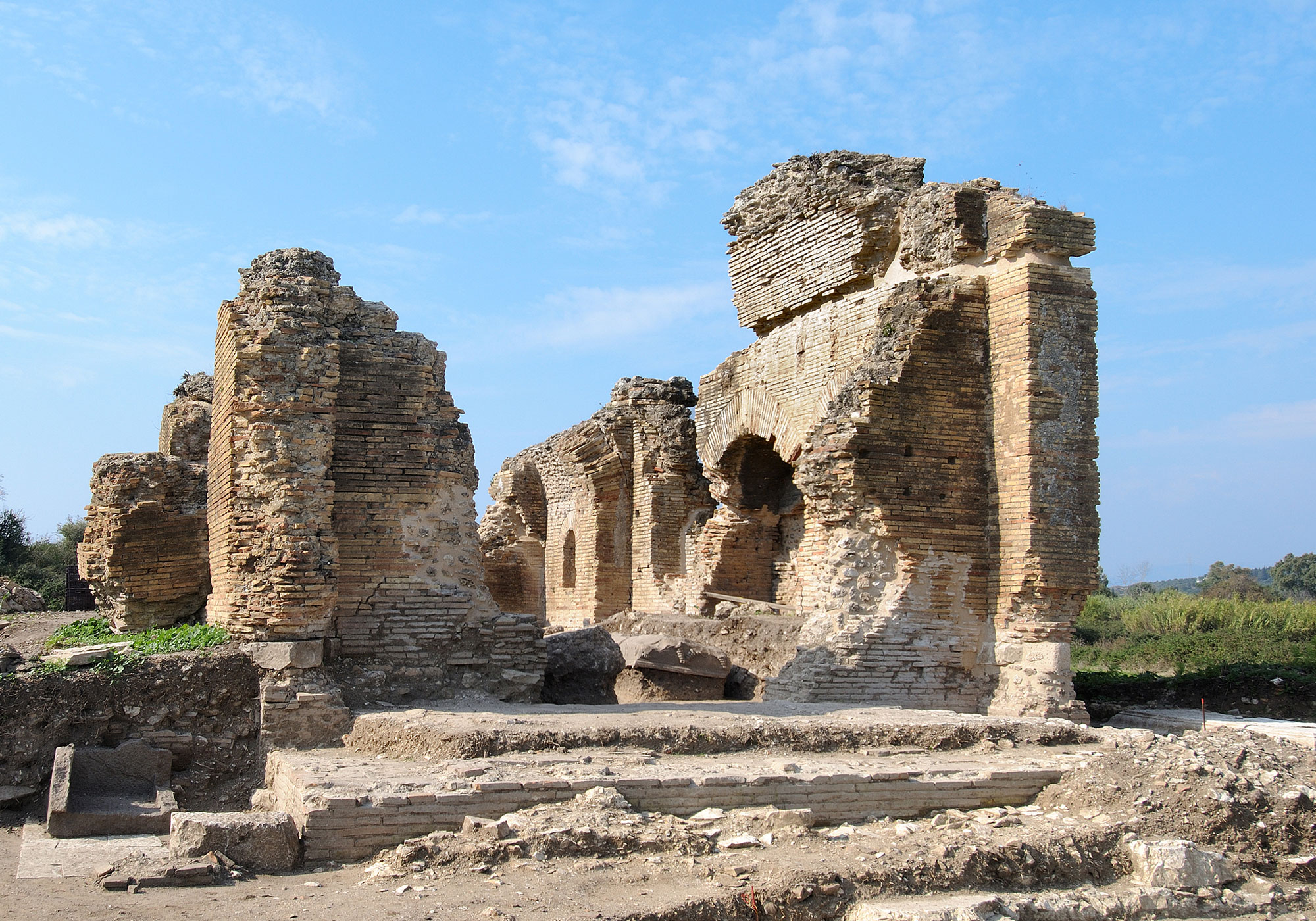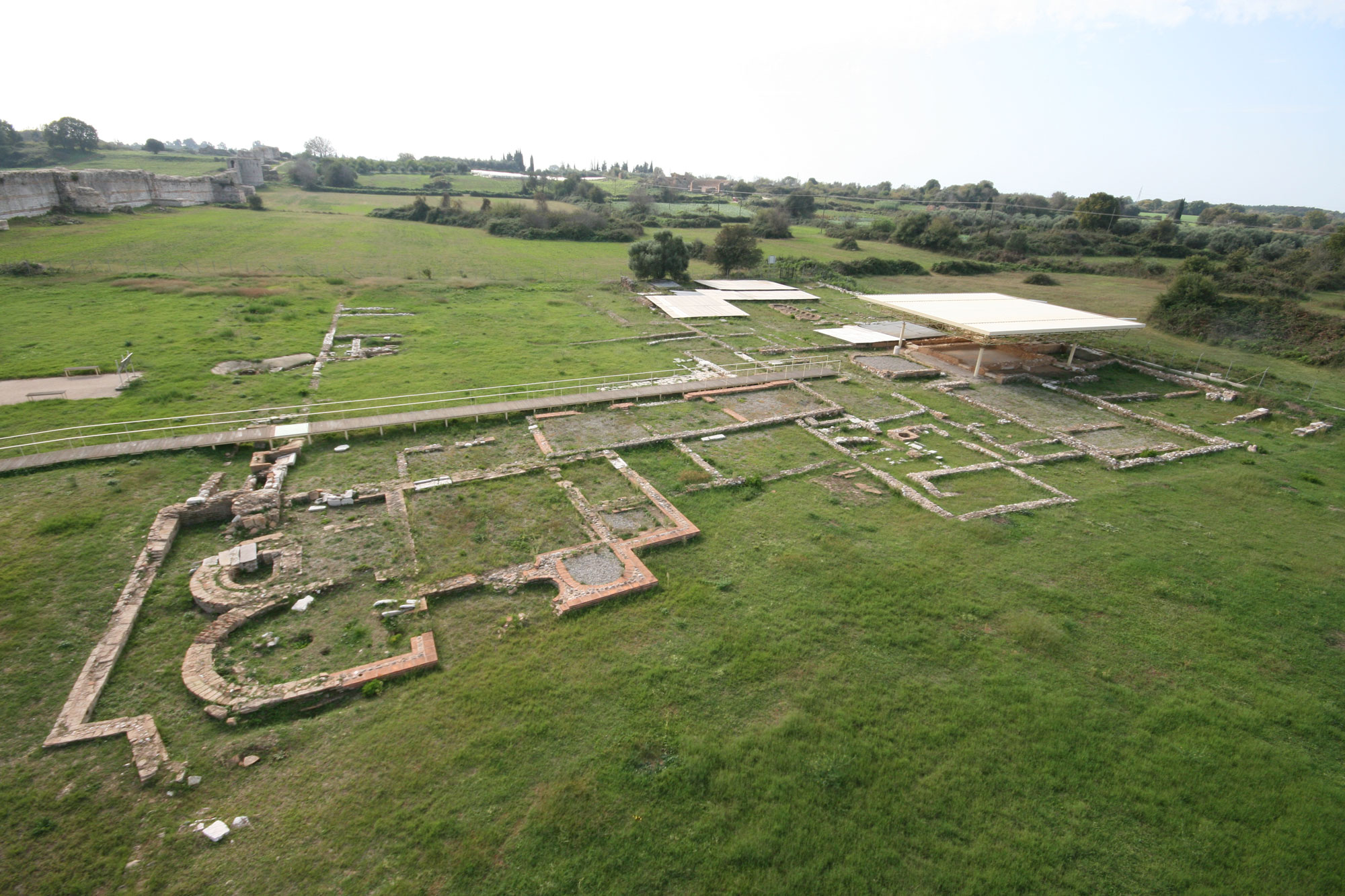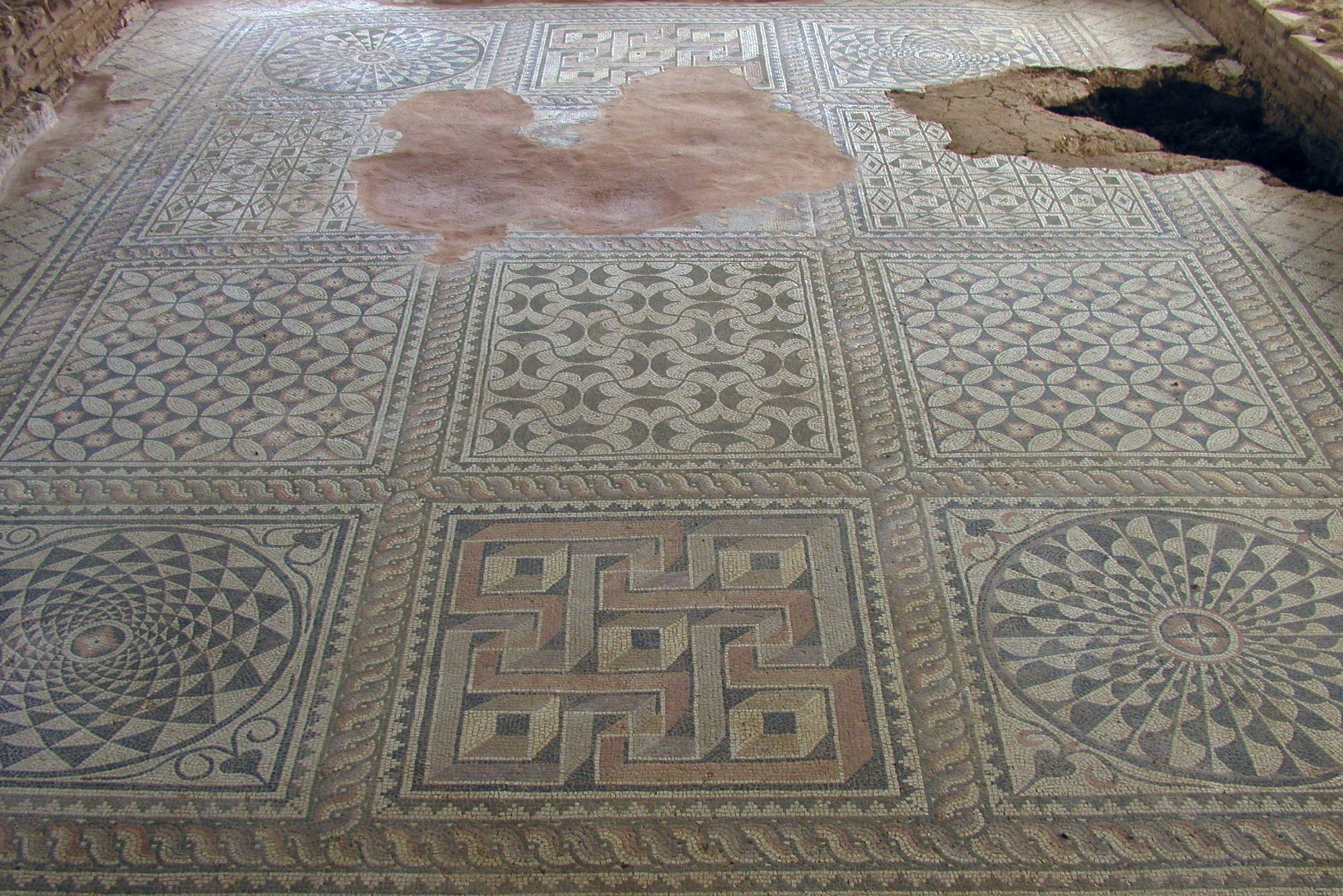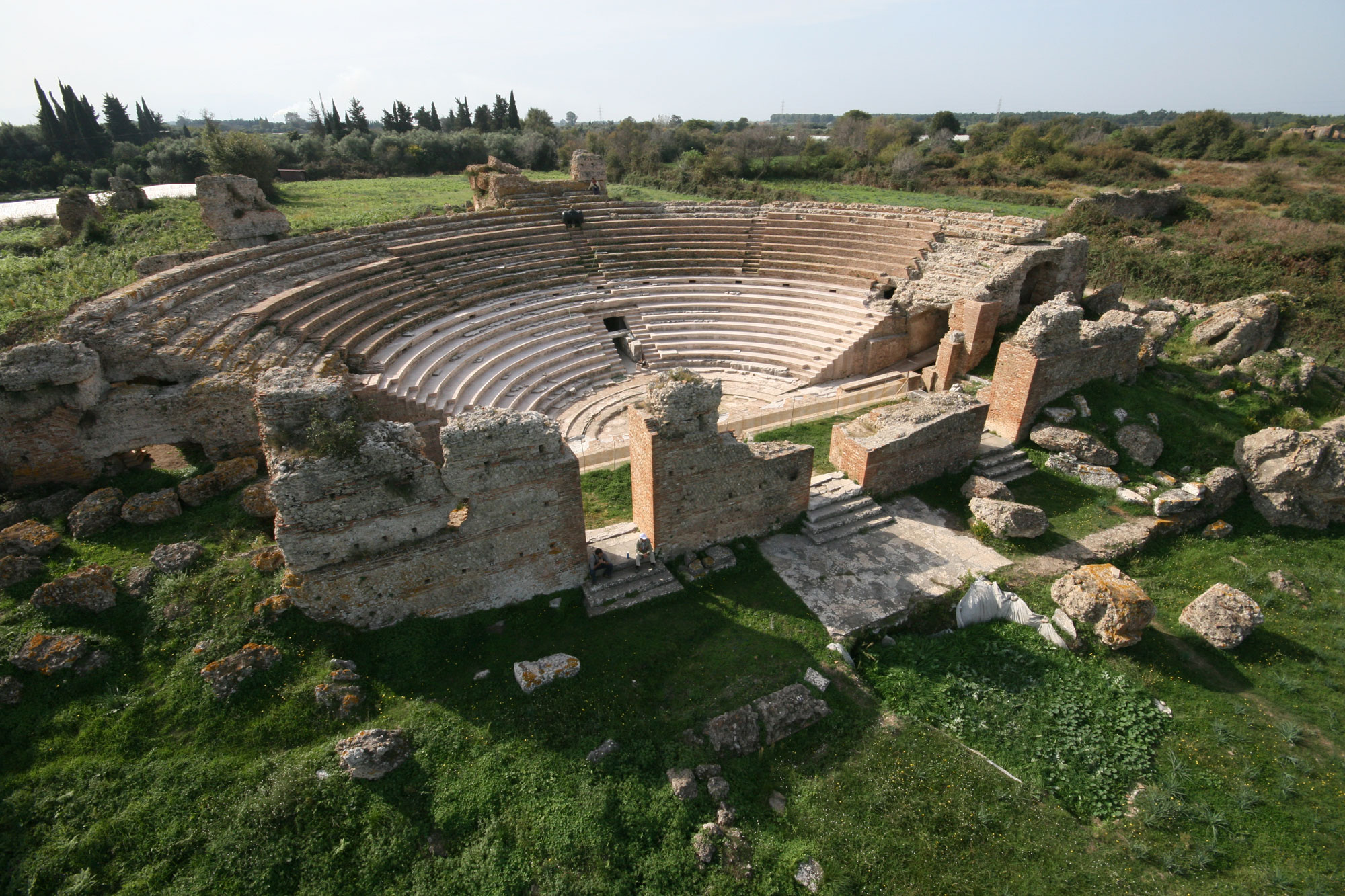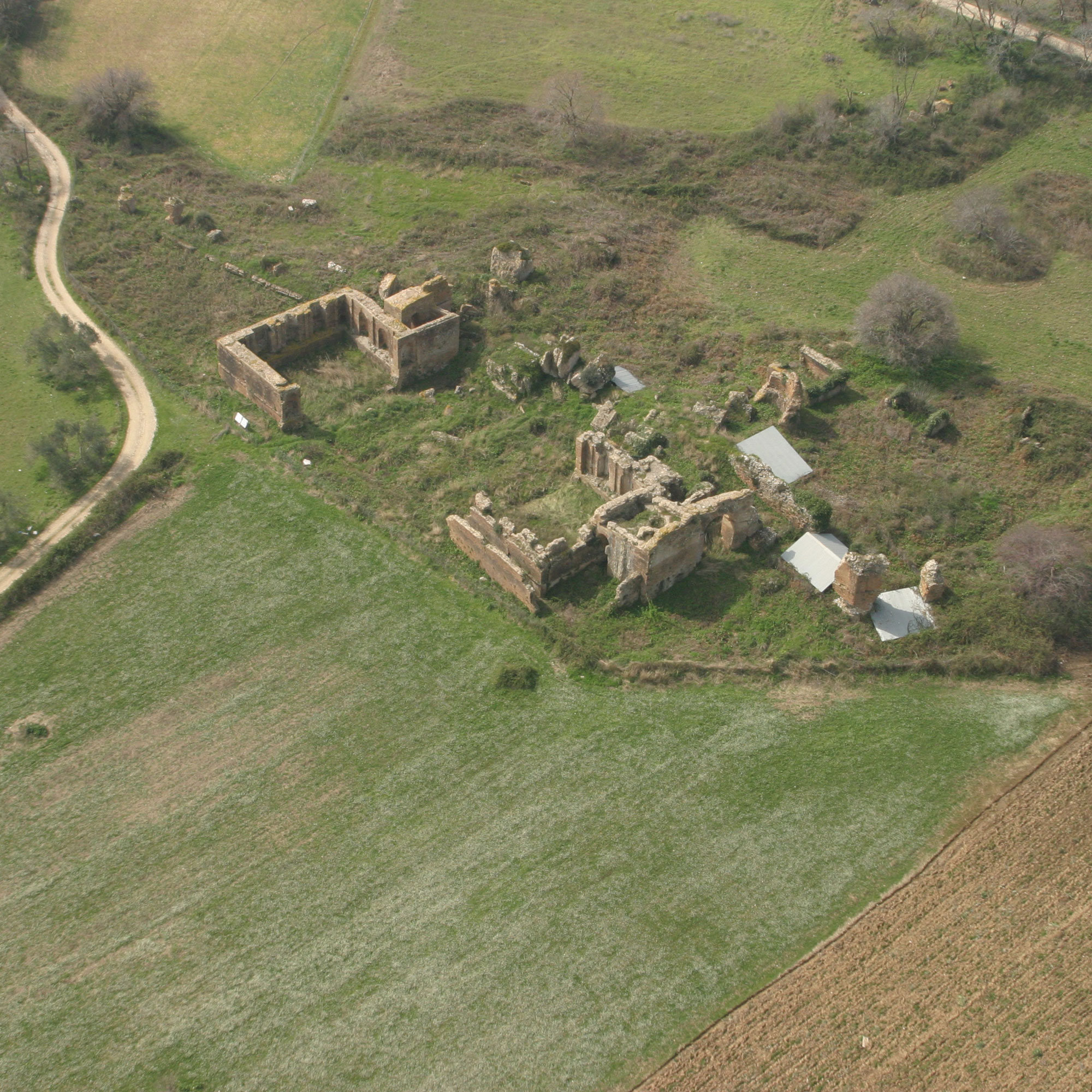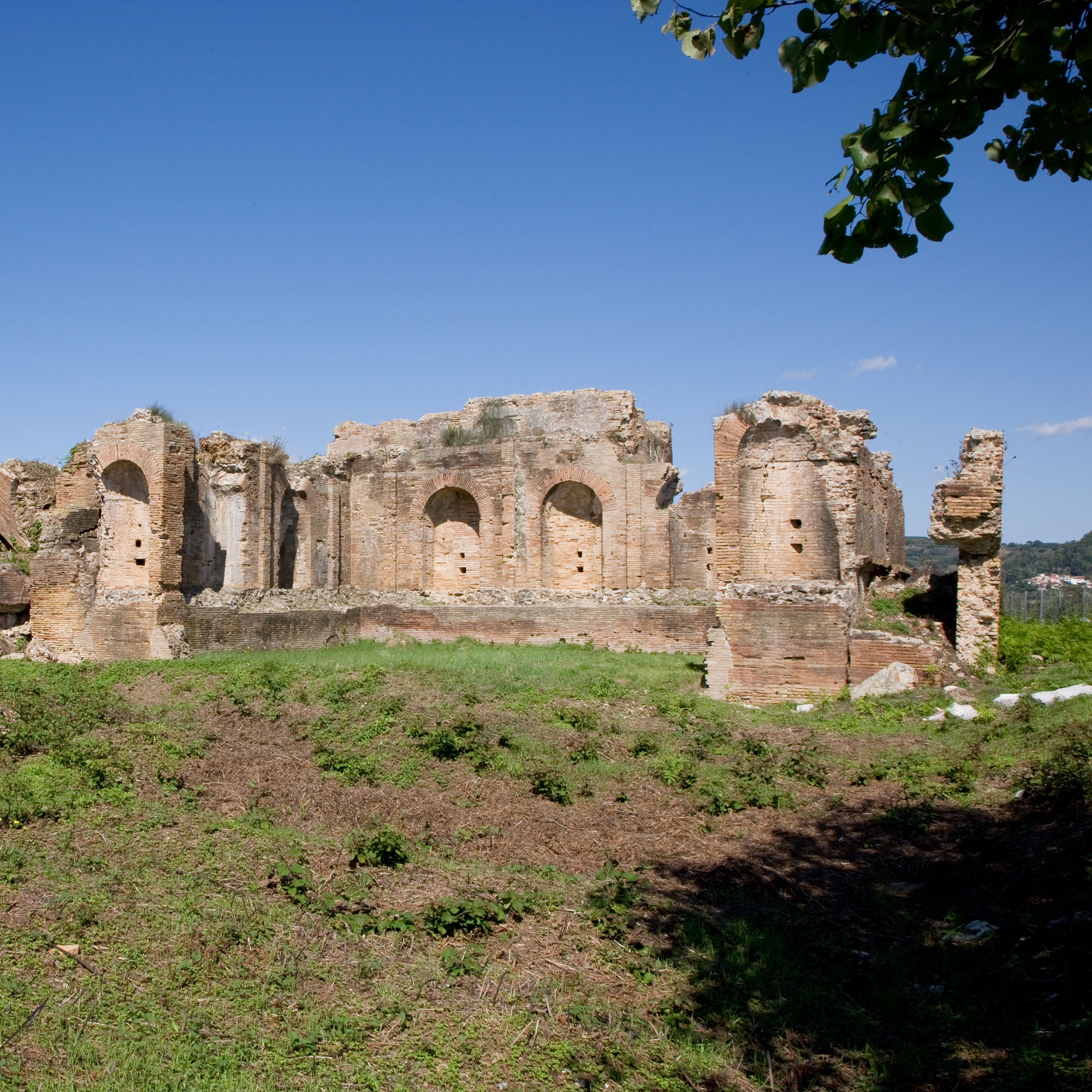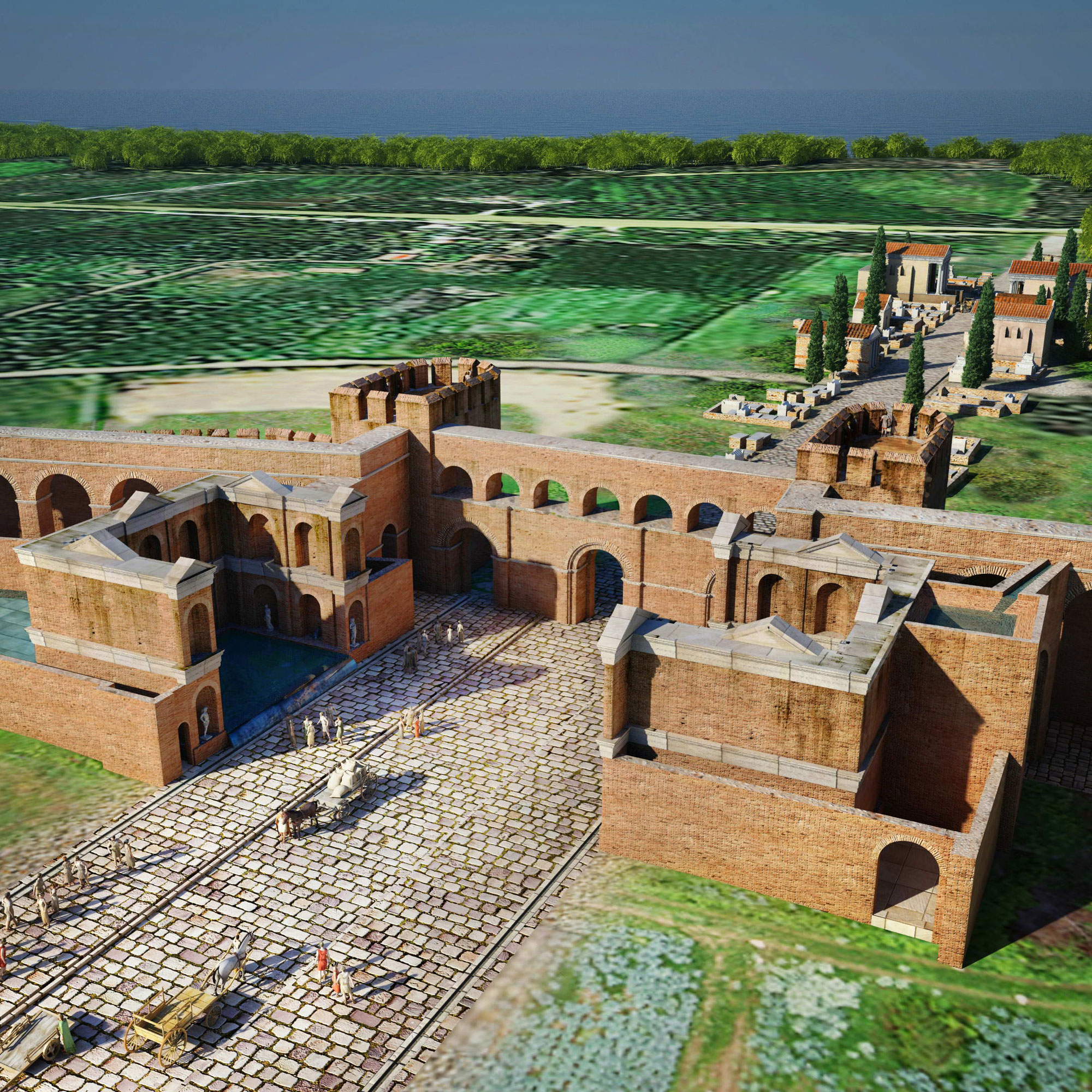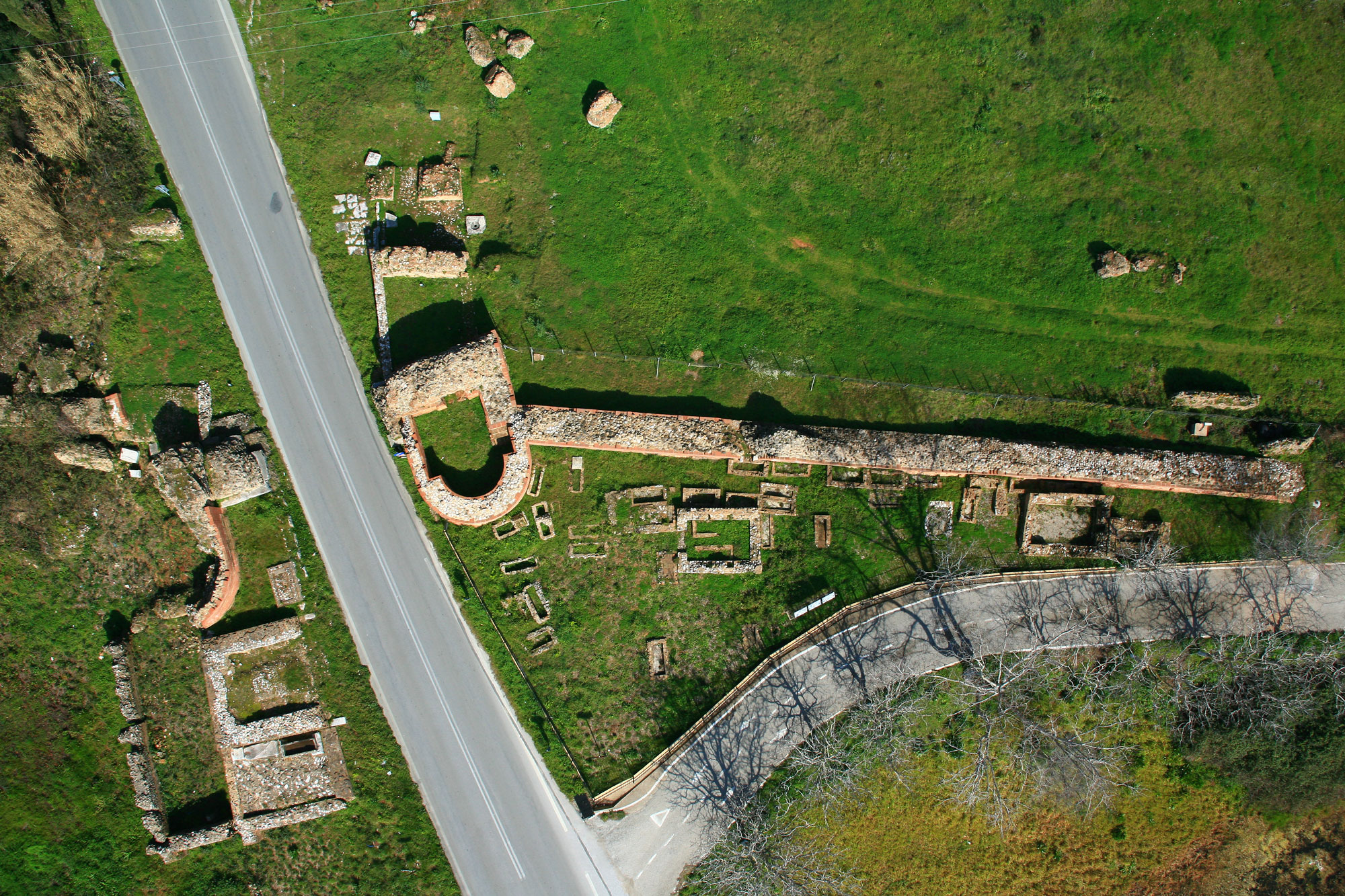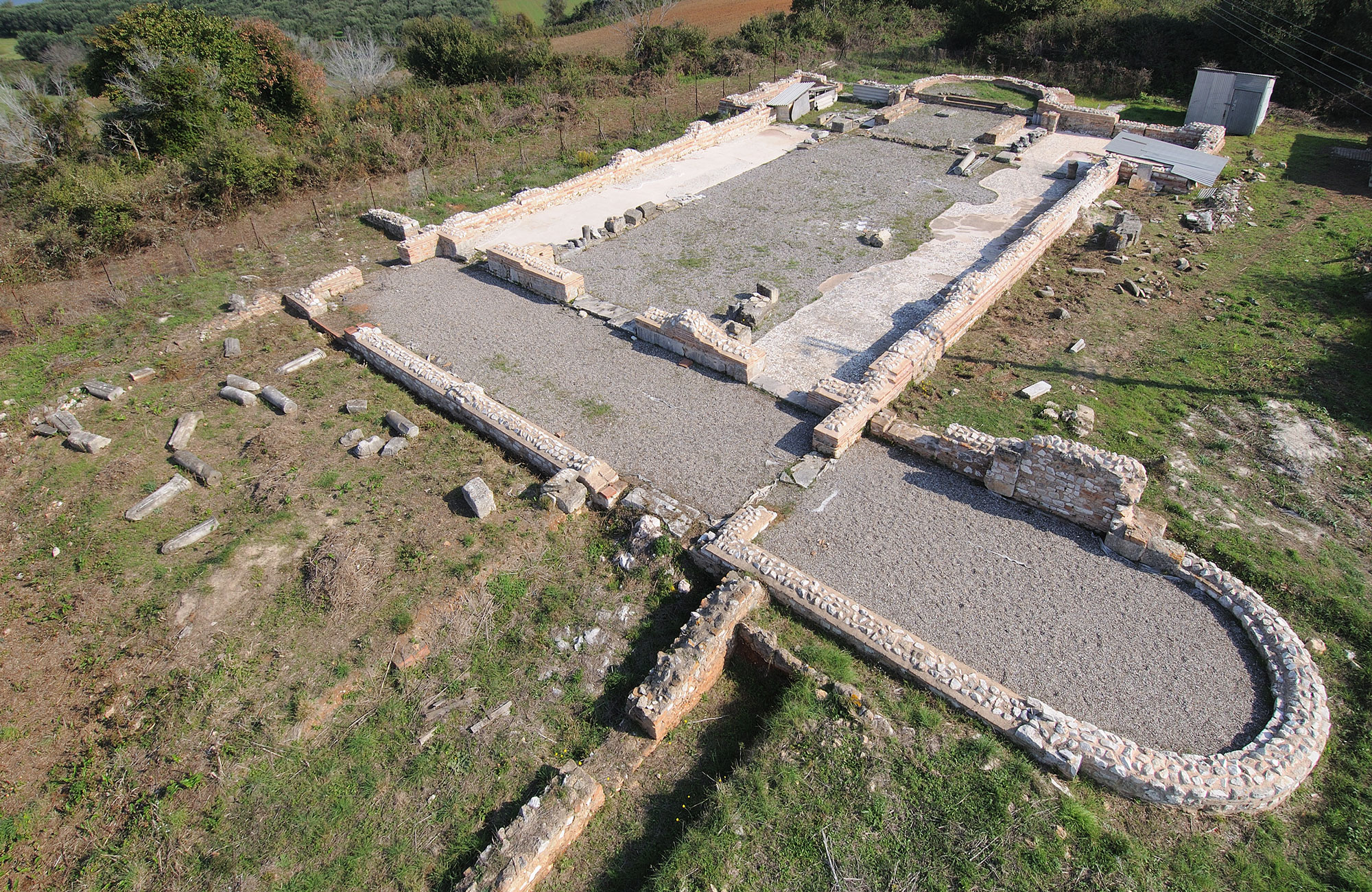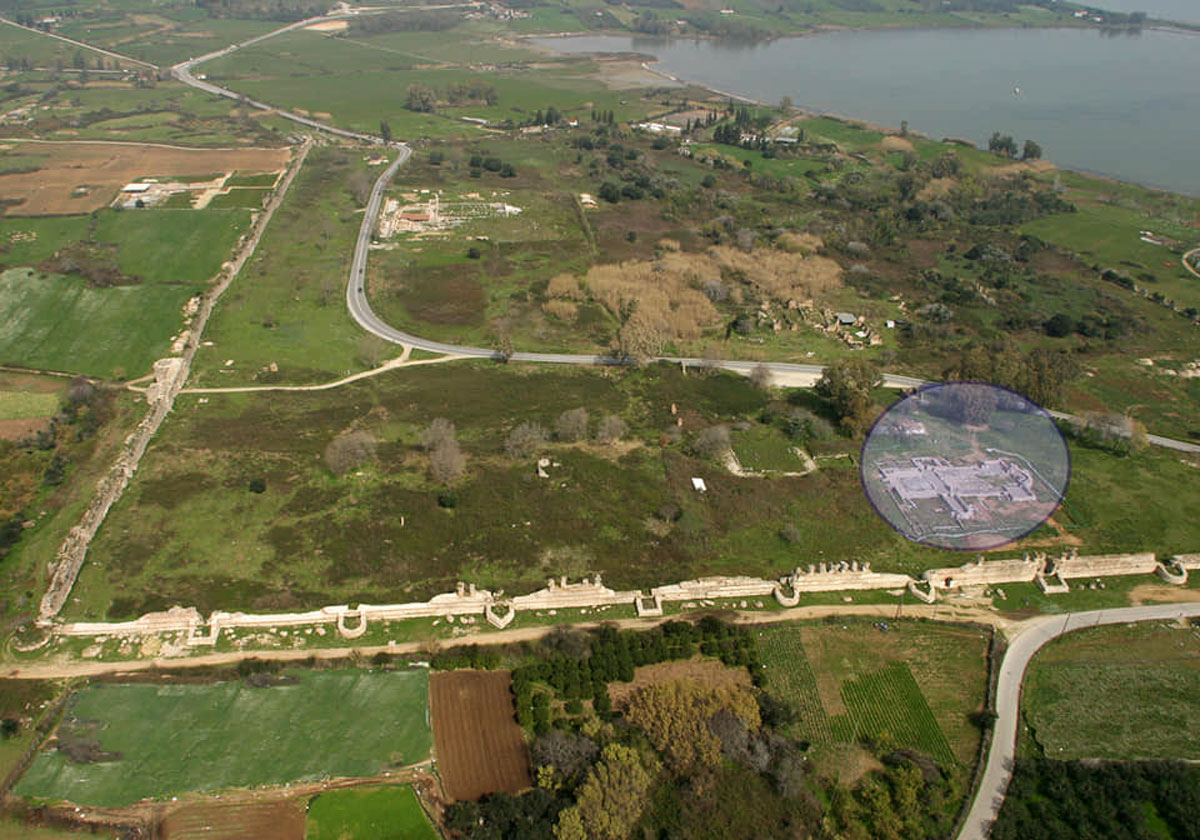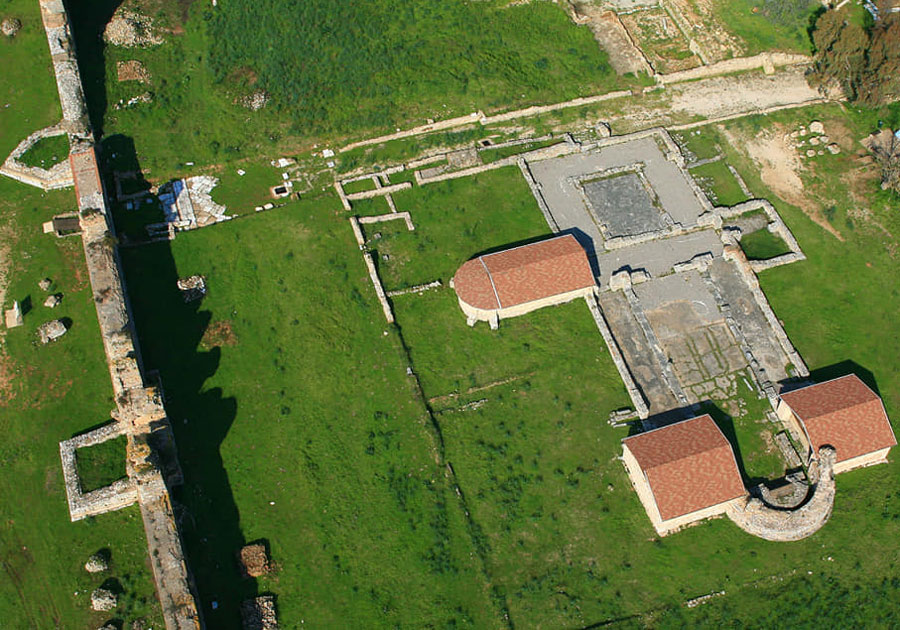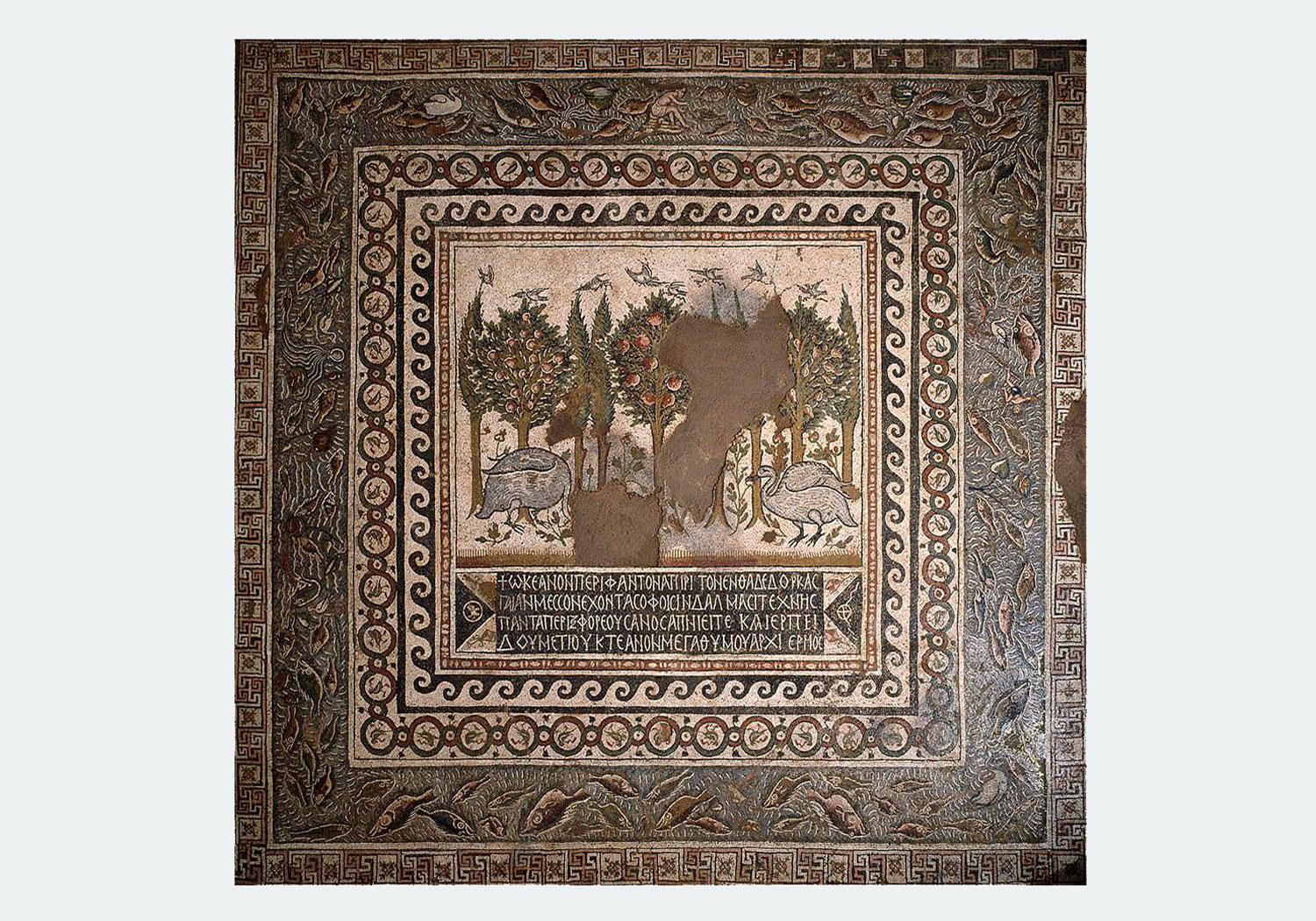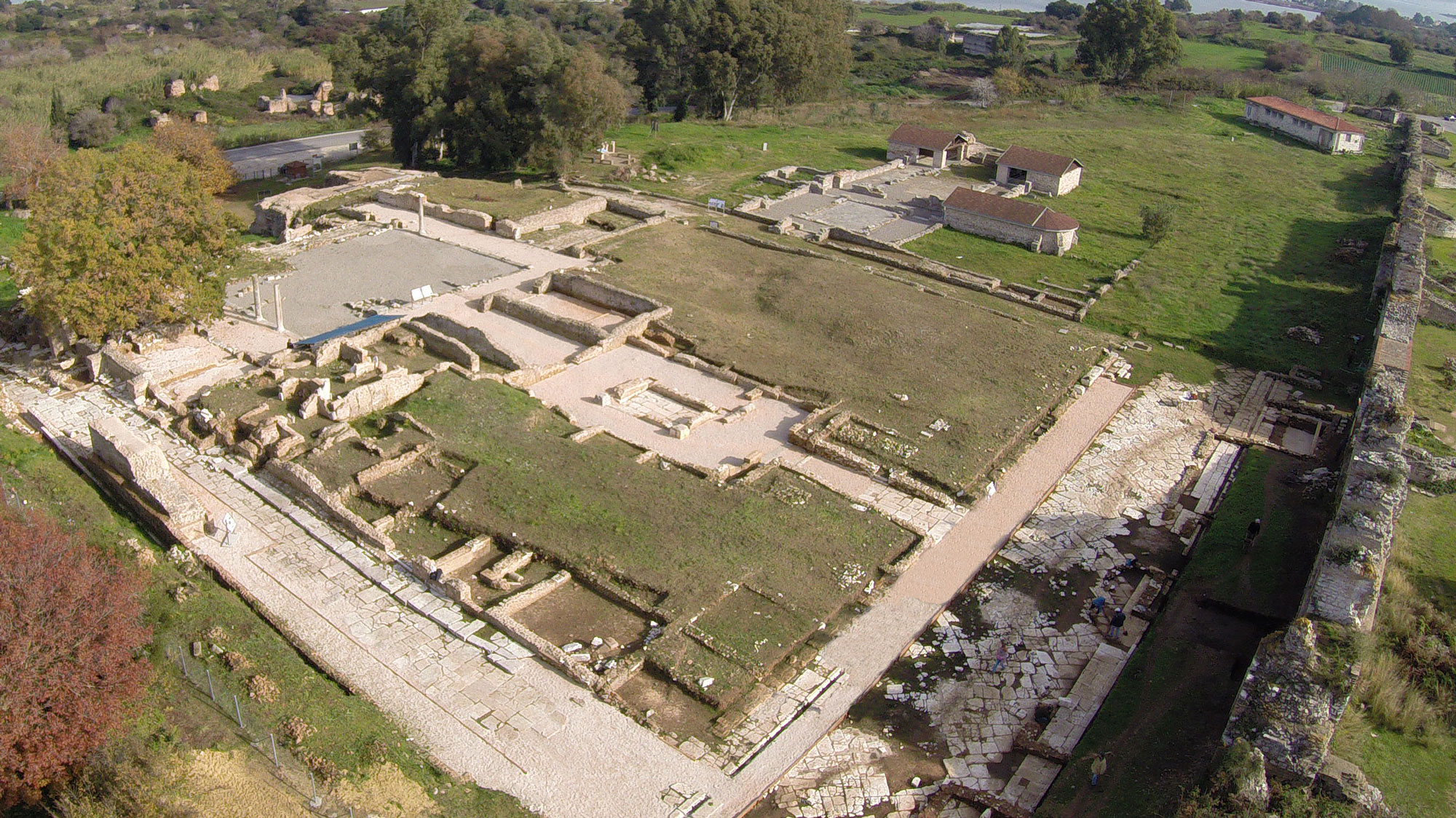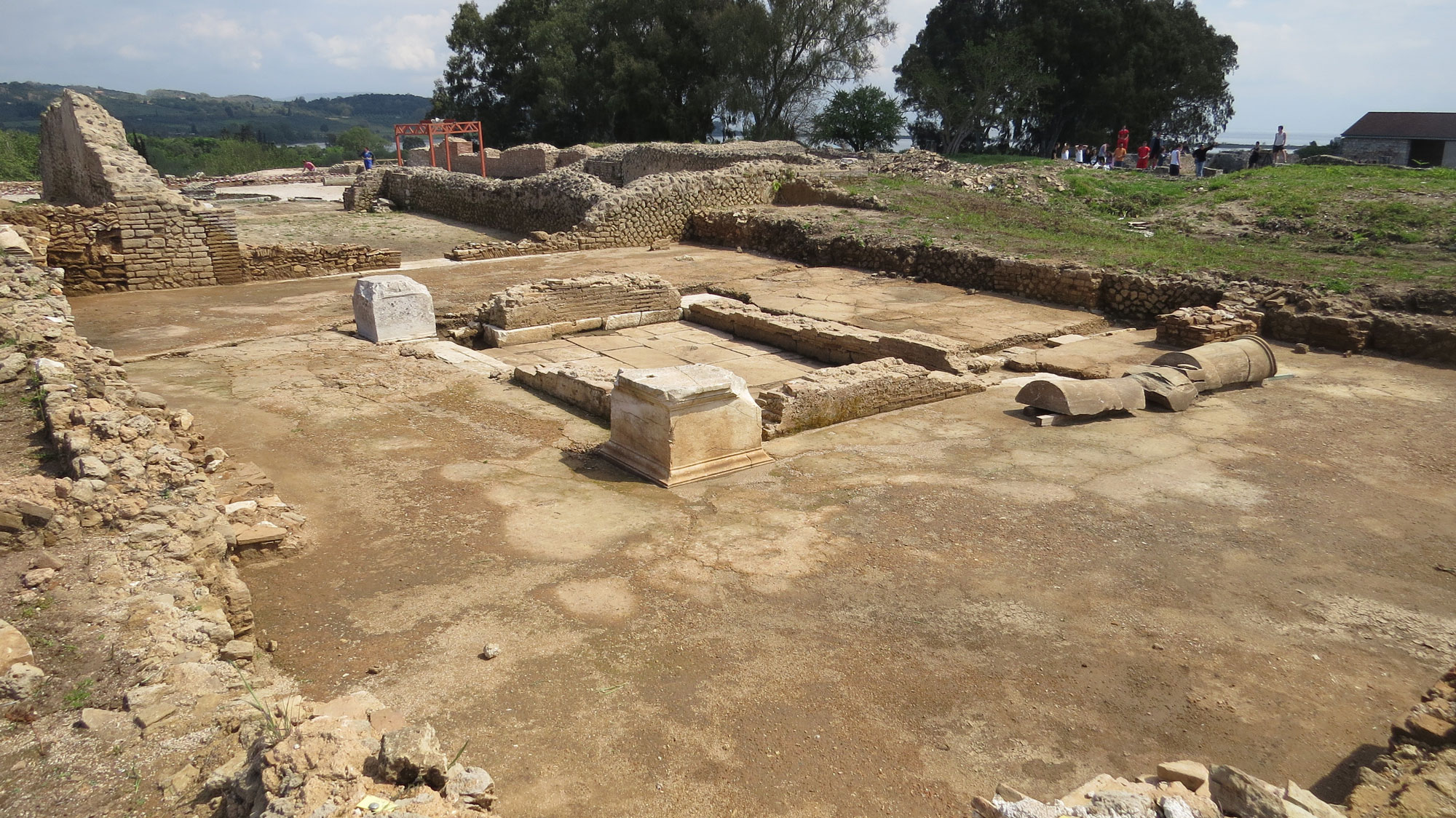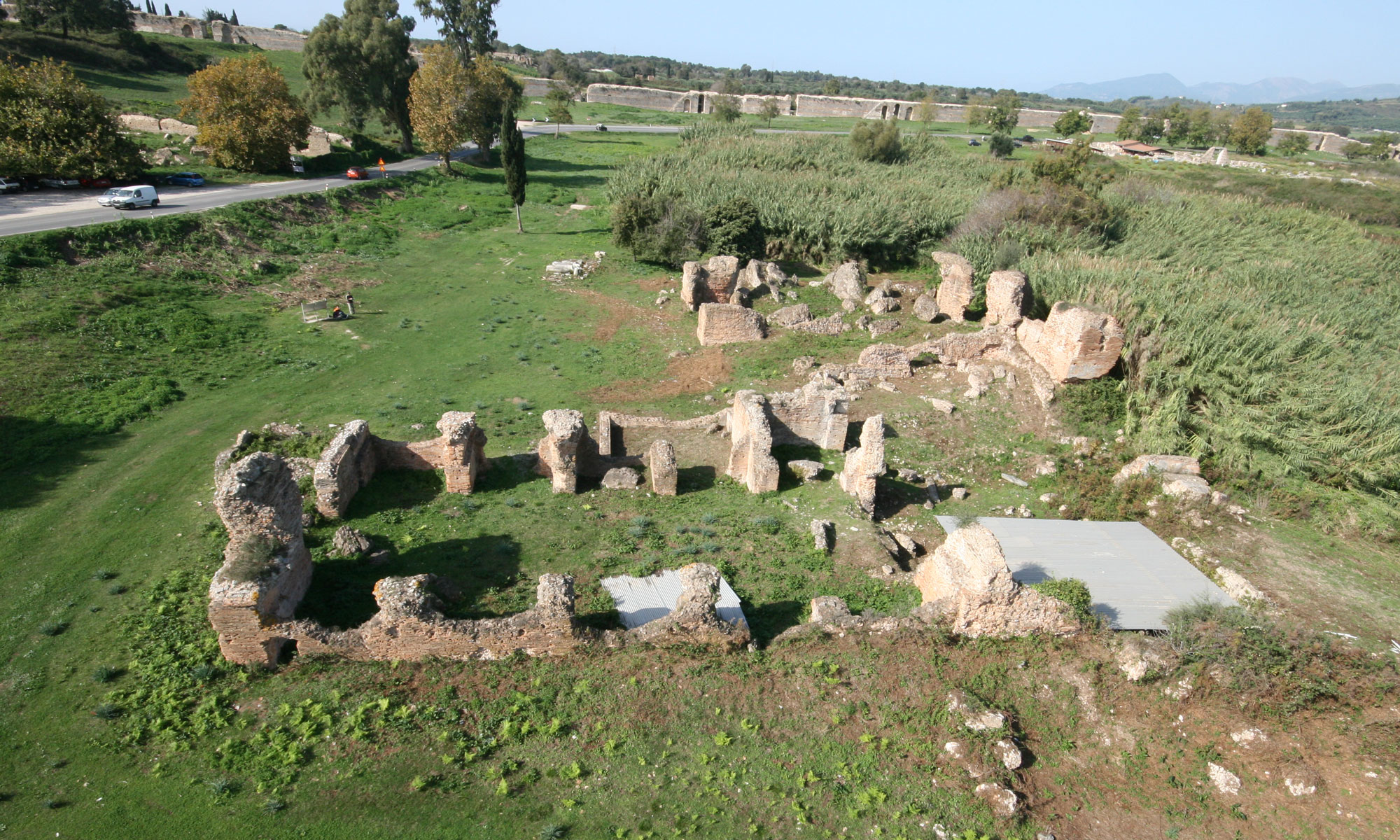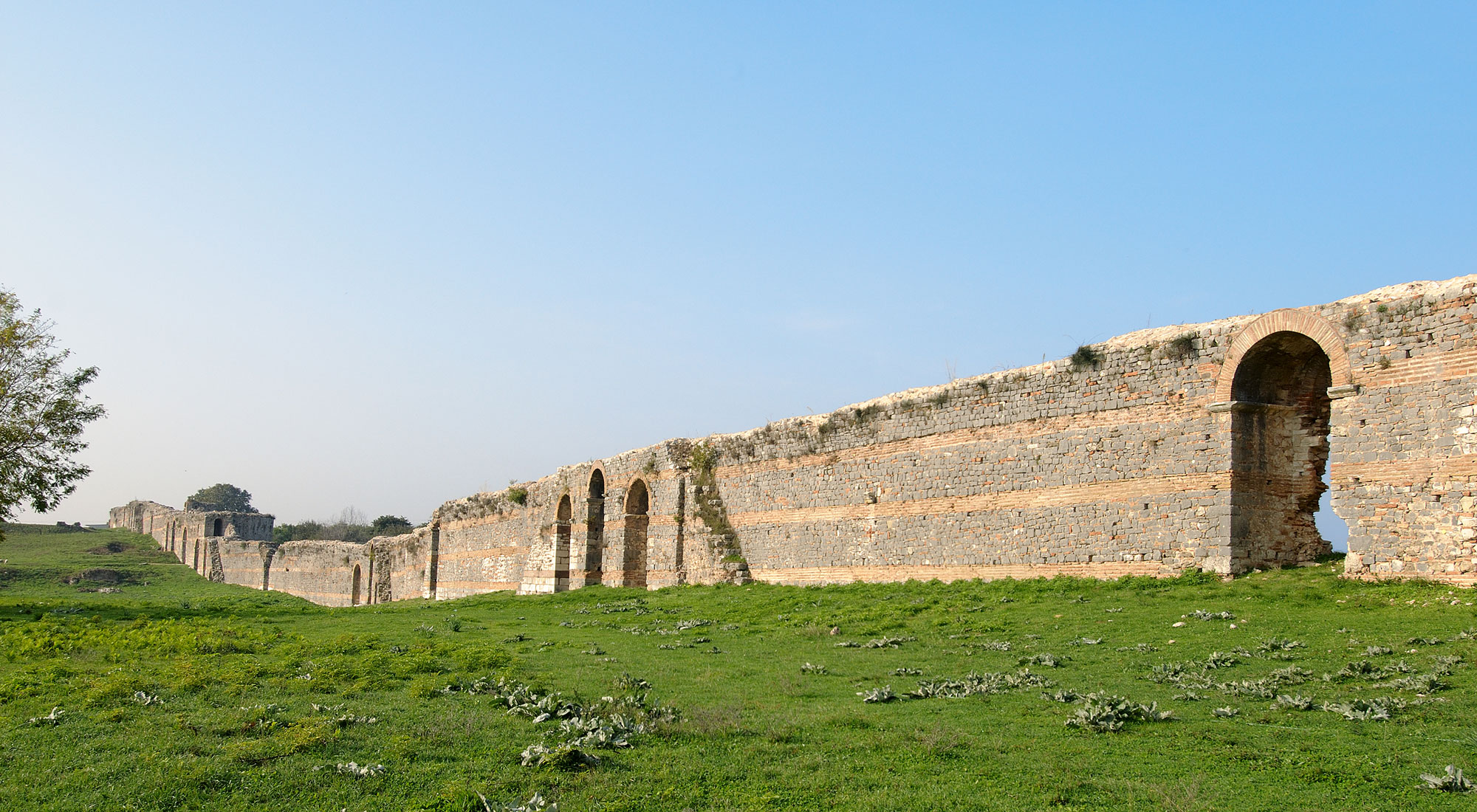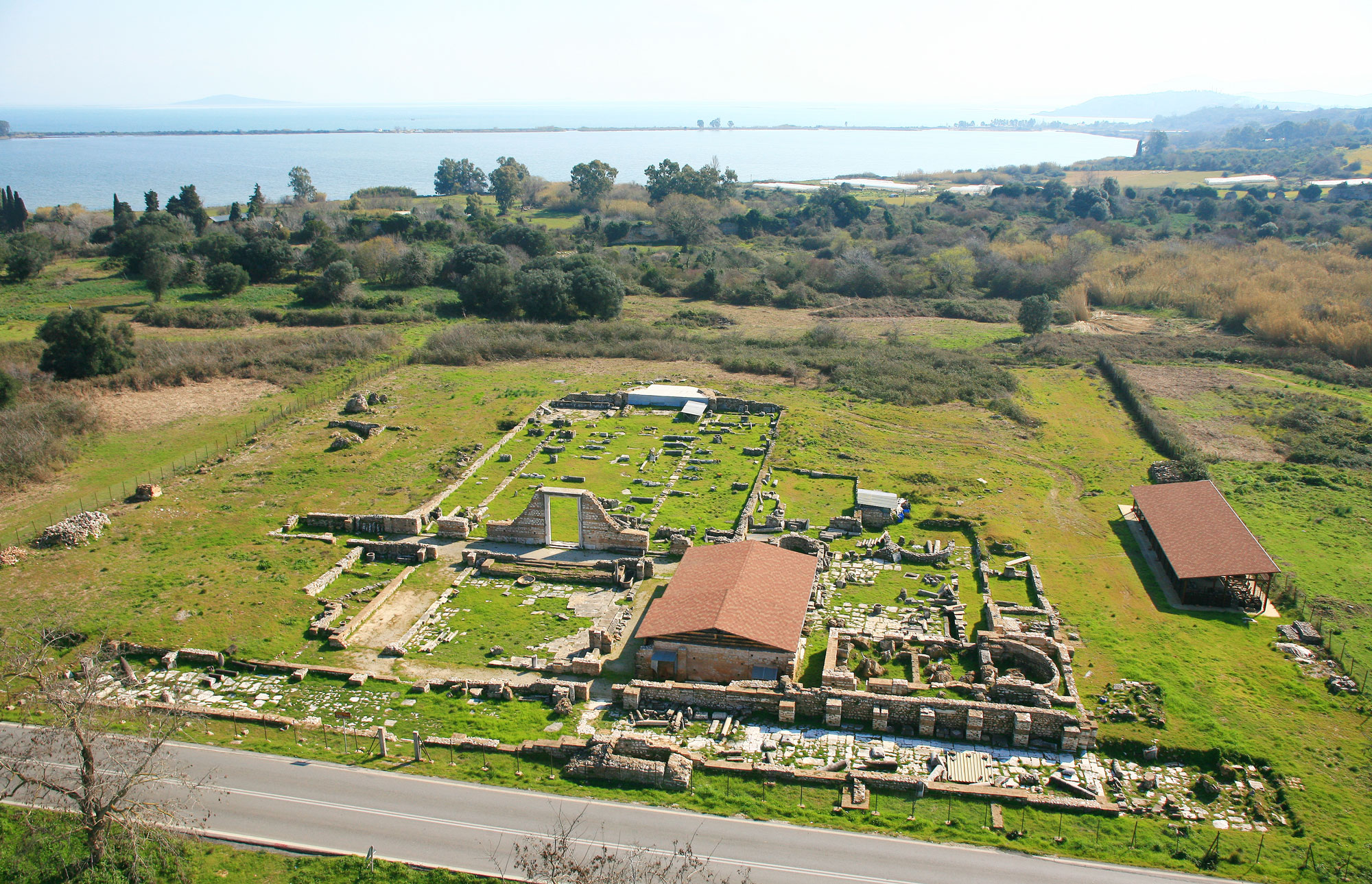






Ν Ι Κ Ο Π Ο Λ Η
στρεμμάτων ανάμεσα στις ακτές του Ιονίου
δυτικά και του Αμβρακικού ανατολικά.
Πρέβεζας, στο ΝΔ άκρο της Ηπείρου, η Νικόπολη
καλύπτει μία τεράστια έκταση 13.5000
Κτισμένη στον αυχένα της χερσονήσου της
ο αρχαιολογικός χώρος
ΝΙΚΟΠΟΛΗ
ο αρχαιολογικός χώρος
Η Νικόπολη με την ύπαιθρο-χώρα της καλύπτει μία τεράστια πεδινή έκταση 13.500 στρεμμάτων ανάμεσα στις ακτές του Ιονίου Πελάγους δυτικά και Αμβρακικού Κόλπου ανατολικά
The Archaeological Site
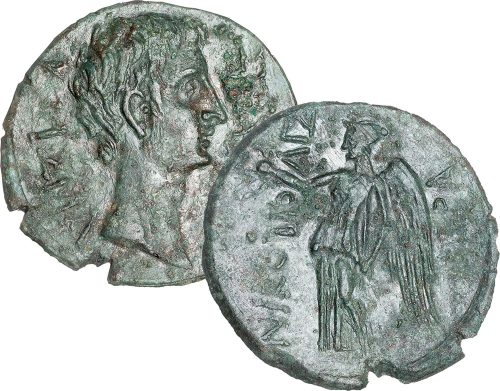
Perched on the neck of the Preveza peninsula at the southwestern edge of Epirus, Nicopolis commanded a strategically pivotal position. Positioned between the Ionian Sea to the west and the Ambracian Gulf to the east, it wielded the advantage of overseeing the entrance to the Ambracian Gulf, facilitating navigation in the northern Ionian, connecting to Dalmatia and the Italian peninsula. Additionally, it controlled the land routes leading into the interior of Epirus, extending further into Thessaly, Macedonia, and Illyria, as well as Akarnania.
Nicopolis, enclosed by formidable walls, featured areas at the same elevation (17–25 m.) as well as low hills (30–44 m.) in its main southeastern section. The city adhered to a meticulously planned grid layout, providing space for both private residences and public edifices. Beyond the city walls, flanking roads leading to the countryside and its three ports, were its five cemeteries. Further north, nestled at the base of a low hill range, the city’s suburb emerged, displaying the Victory Monument of Actiumatop the hill. This area housed essential structures for the Actian sacred games of the city, such as the Stadium, Theater, Gymnasium, and Baths.
In the Roman era, Nicopolis served as the administrative and spiritual hub of Epirus and Western Greece, characterized by a vibrant cosmopolitan atmosphere. Subsequently, during the early Christian period, the city faced invasions by barbarian forces, leading to a significant reduction in its territory. Nevertheless, Nicopolis experienced a revival in the 5th and 6th centuries, evolving into a religious and spiritual center. This resurgence is evident in the imposing early Christian walls and the splendid basilicas adorned with exquisite mosaic decorations.
As time progressed, Nicopolis gradually faded into obscurity and was ultimately abandoned after the 10th century AD.
In the city’s periphery, there was an expansive complex that included a mosque along with religious and secular structures. It was at this site that the Aktia, a series of sacred games dedicated to Apollo, took place. Here, you could find the Victory Monument of Actium (a), the theater (b), the stadium (c), the gymnasium (d), and the thermal baths (e)
Find out more
Αρχαιολογικός οδηγός θεάτρου
Αρχαιολογικός οδηγός Μνημείου Αυγούστου
The acqueduct, a testament to imperial-era hydraulic engineering, spanned over 50 km, stretching from the Louros River’s sources to the present-day village of Agios Georgios, reaching up to Nicopolis.
Find out more
Αρχαιολογικός οδηγός
Φυλλάδιο
Εκπαιδευτική εφαρμογή
A paved thoroughfare originated from the Northern Entrance, traversing the nearby Northern Cemetery and subsequently the periphery before concluding at the Victory Monument.
One of the two most extensively studied residences in Nicopolis, spanning 3,400 square meters, enveloping an entire city block. It falls under the category of urban housing known as the “developed type.”
Situated at the heart of the market (Forum), the Forum Concert Hall, with a seating capacity of approximately 1,600 people, served as a venue for musical performances, public gatherings, and theatrical shows.
The route originating from Komaros, the city’s Ionian port, extended all the way to the Western gate. Beyond the gate, you could find the Western Cemetery, and within the city walls stood the Nymphaea, grand public fountains.
An essential thoroughfare began at the Southeastern Gate, guiding the way to the city’s southern port, Vathi. The Northeastern Cemetery expanded on both sides of this roadway.
The Basilica D of Nicopolis stands upon Karauli, a gentle elevation situated beyond the confines of the early Christian city. However, it lies within close proximity to the Roman walls and the Southeastern Gate.
The Basilica Α, also known as the Basilica of Bishop Dometius, is located a few meters north of the Southern or “Beautiful Gate” of the early Christian fortification. The temple was dedicated to Saint Demetrius.
The residence stands prominently in the northeastern precincts of the city, situated on lower terrain that offers commanding views of both the suburb and the Ambracean Gulf. It envelops an entire city block and was in the possession of Nicopolis’ prominent officials and successful businessmen.
Public baths, known as thermal baths, constitute a distinctive feature in the urban scenery of Roman cities. The central public baths in Nicopolis are situated just a short distance to the east of The House of the ekdikos Georgios.
The early Christian fortifications encircling Nicopolis, among the most significant examples of fortified architecture in the southern Balkans, are remarkable for their vast expanse and the preservation of their towering walls, reaching heights exceeding 12 meters.
Among the grandest basilicas in Nicopolis, the Basilica B serves as the city’s metropolitan church and forms an integral component of a larger religious complex that includes the Baptistery as well.


